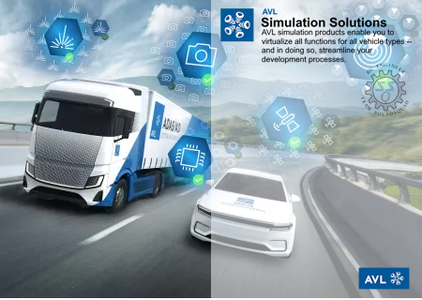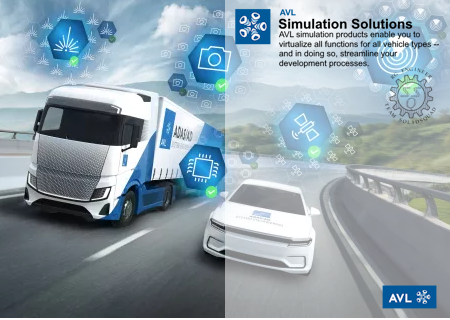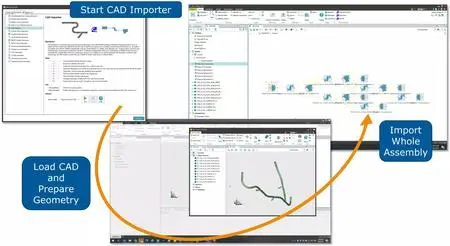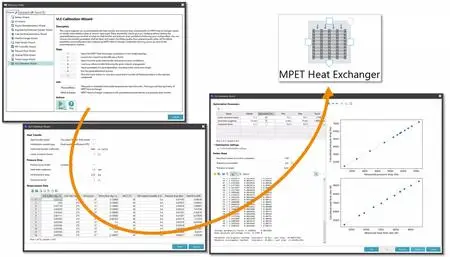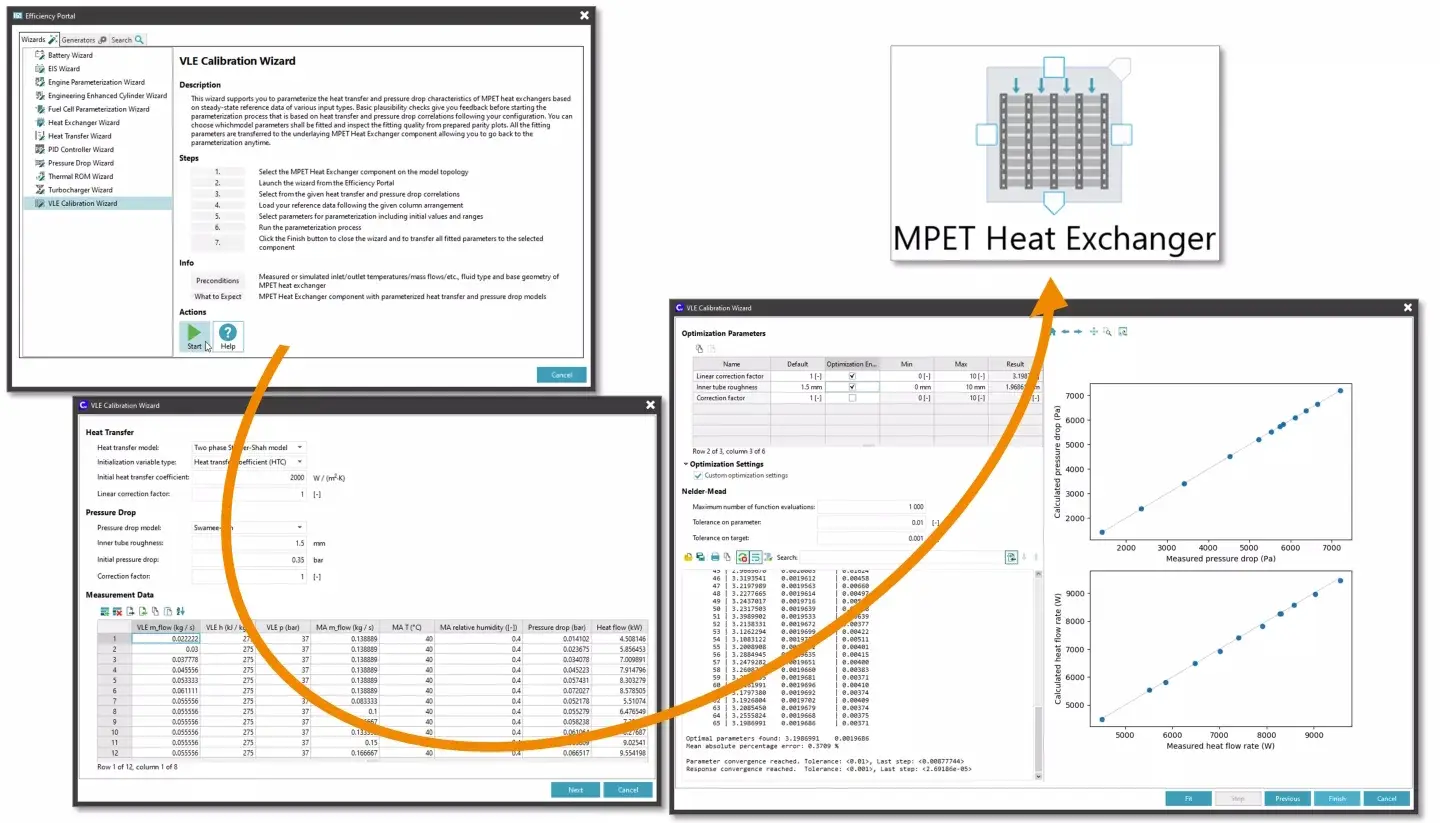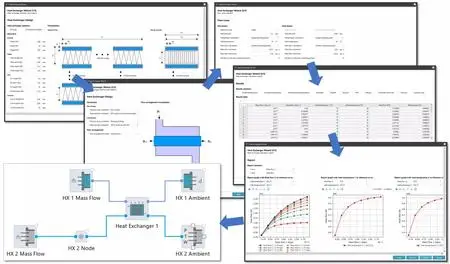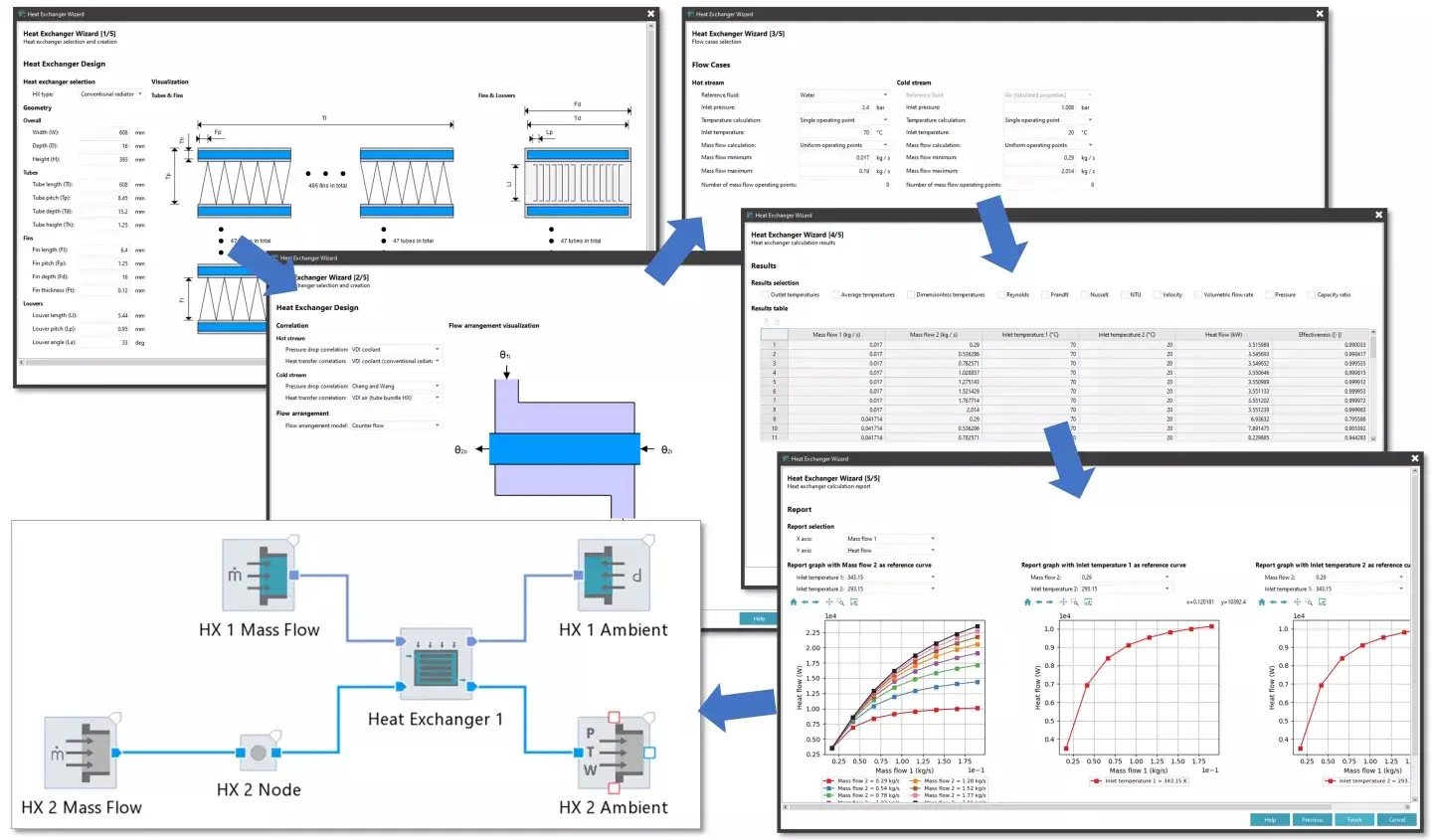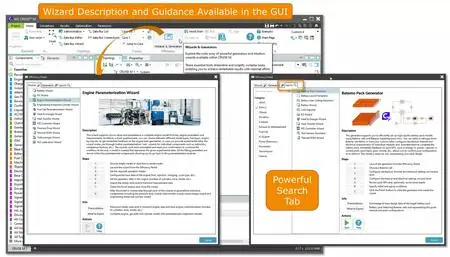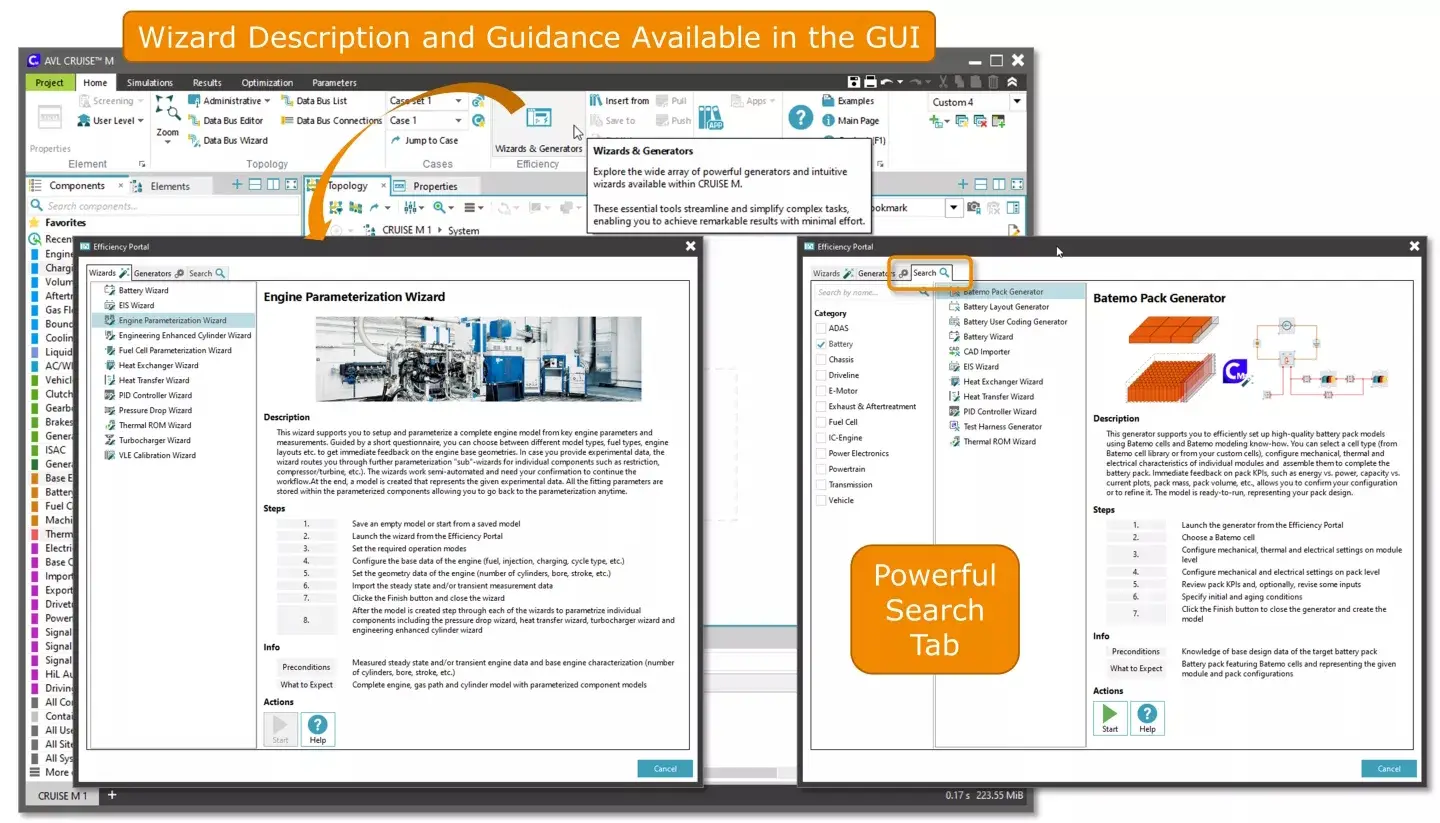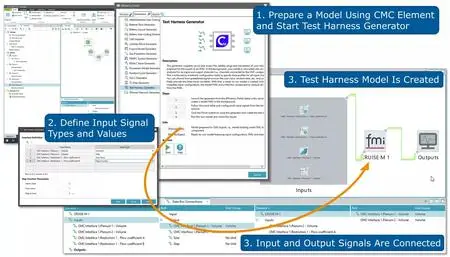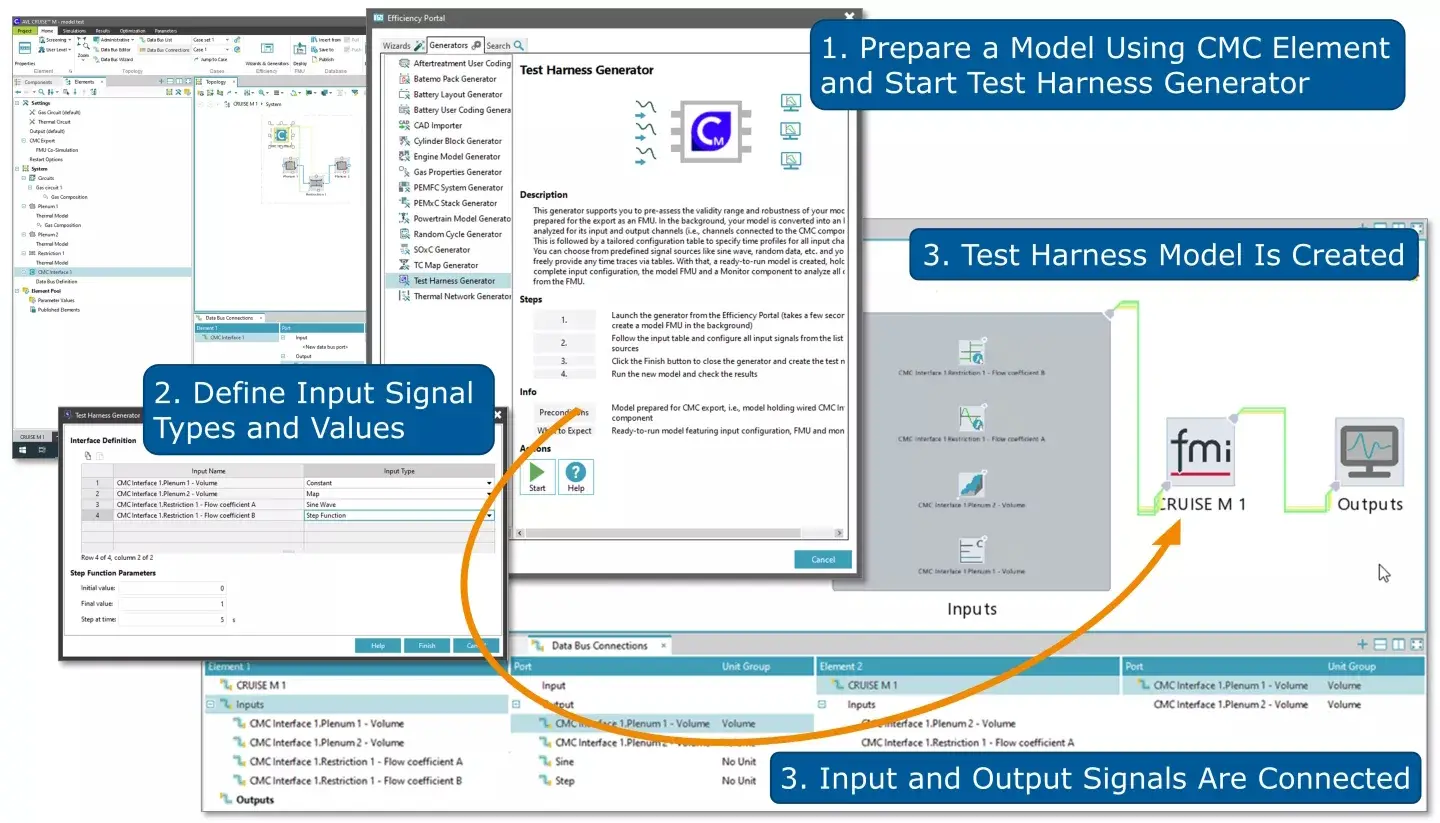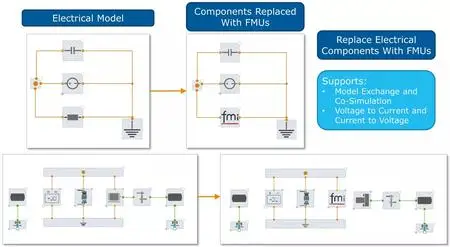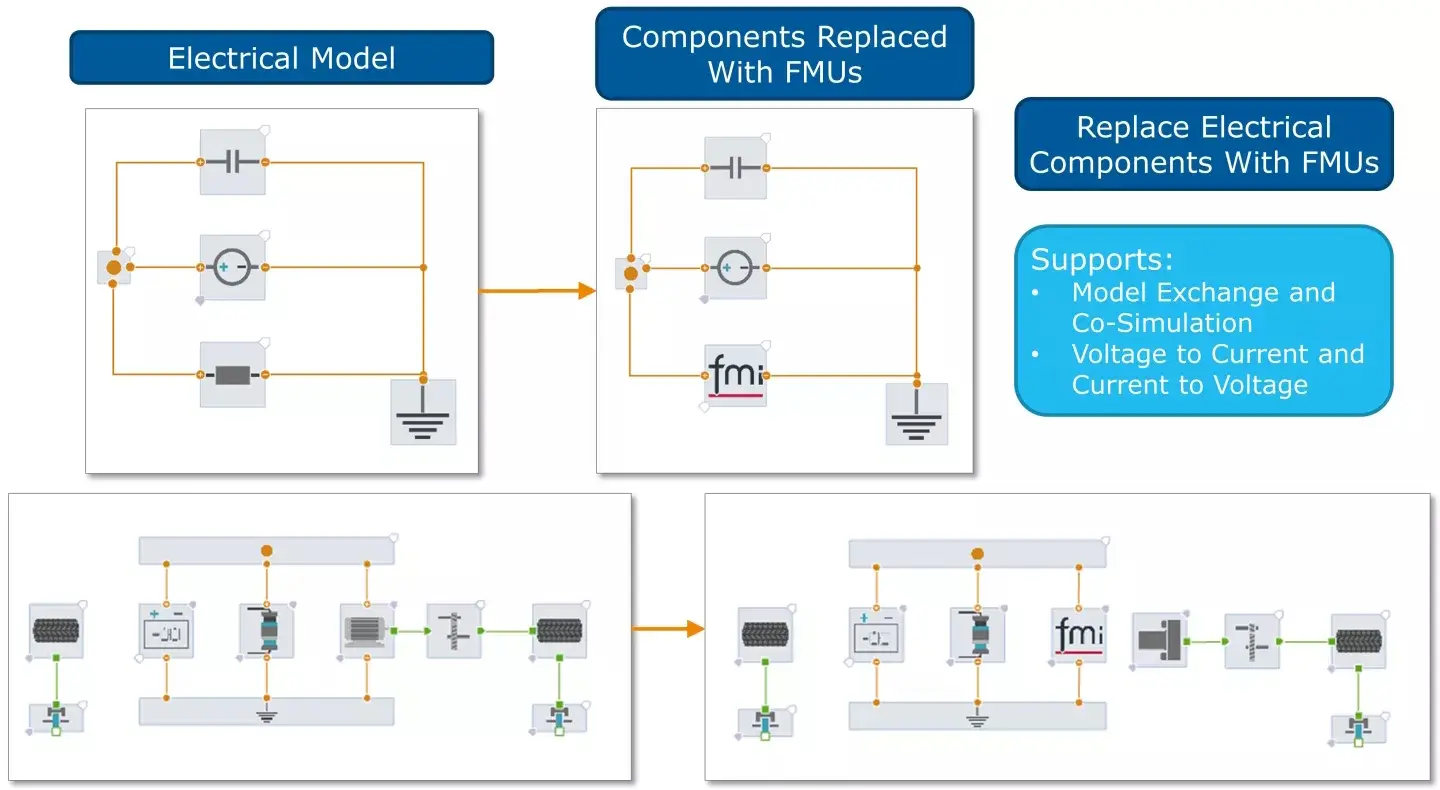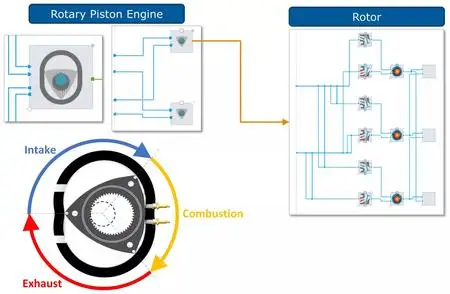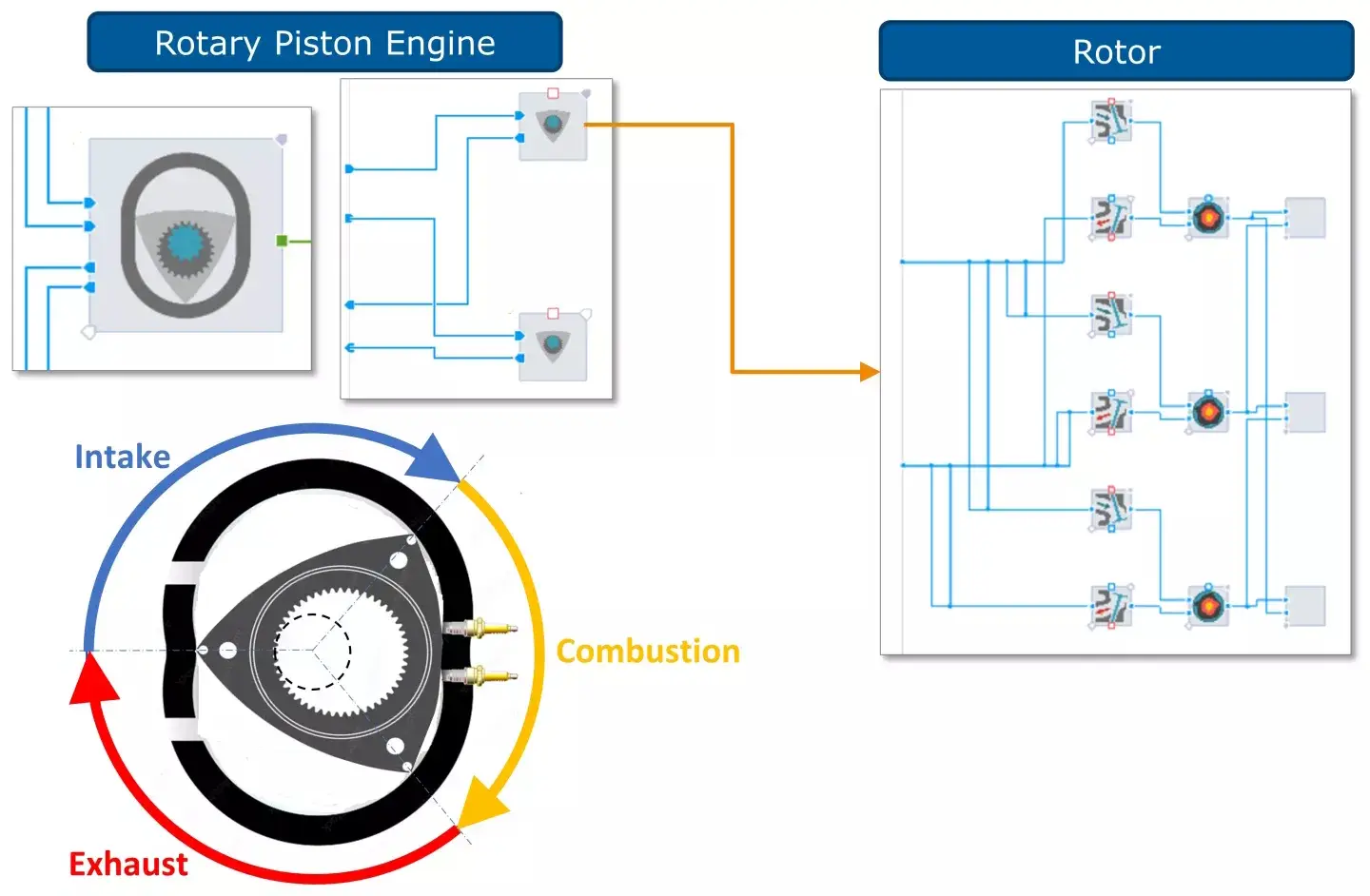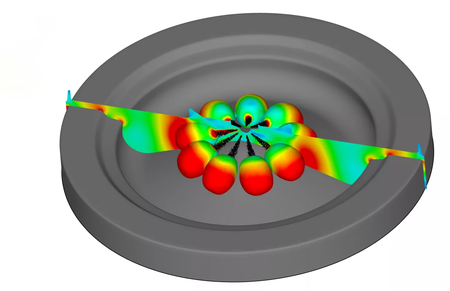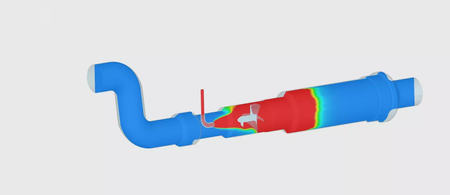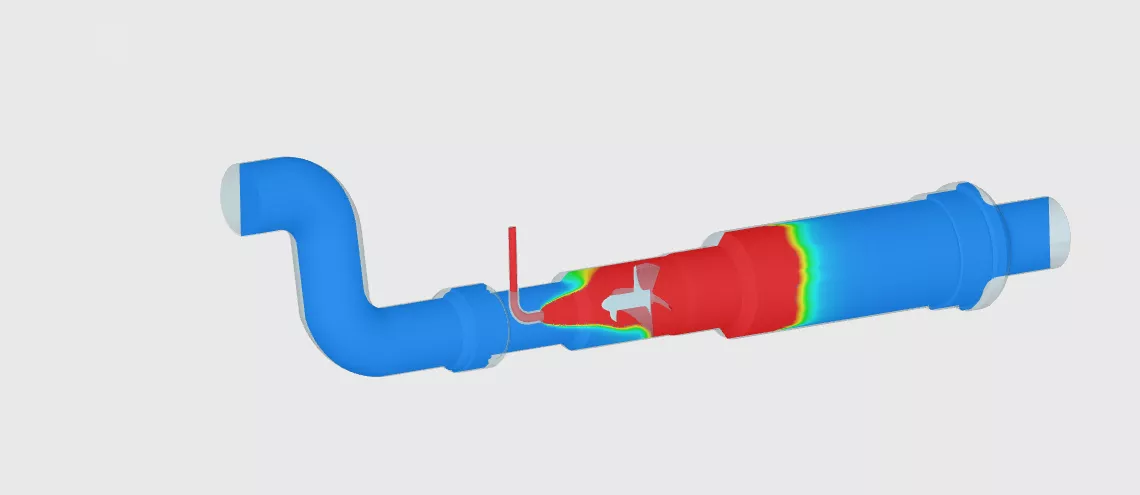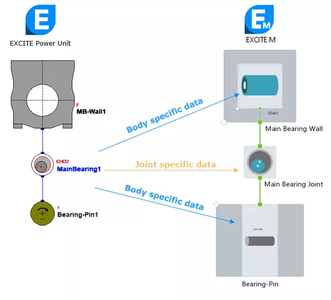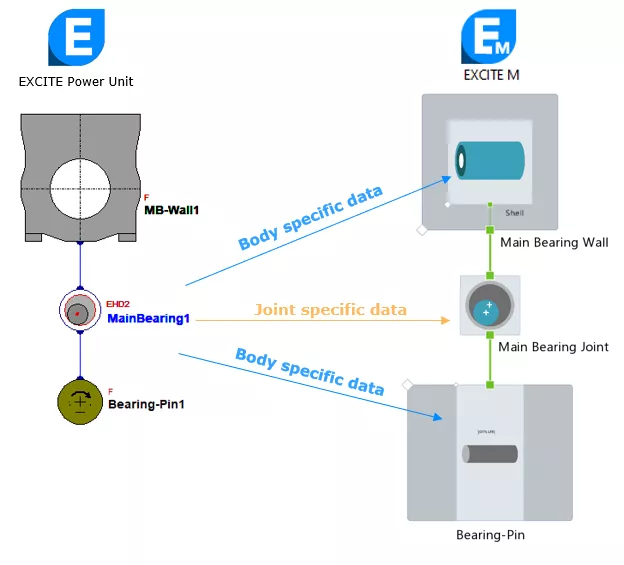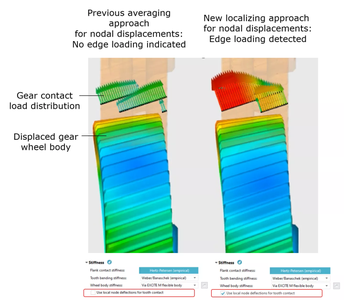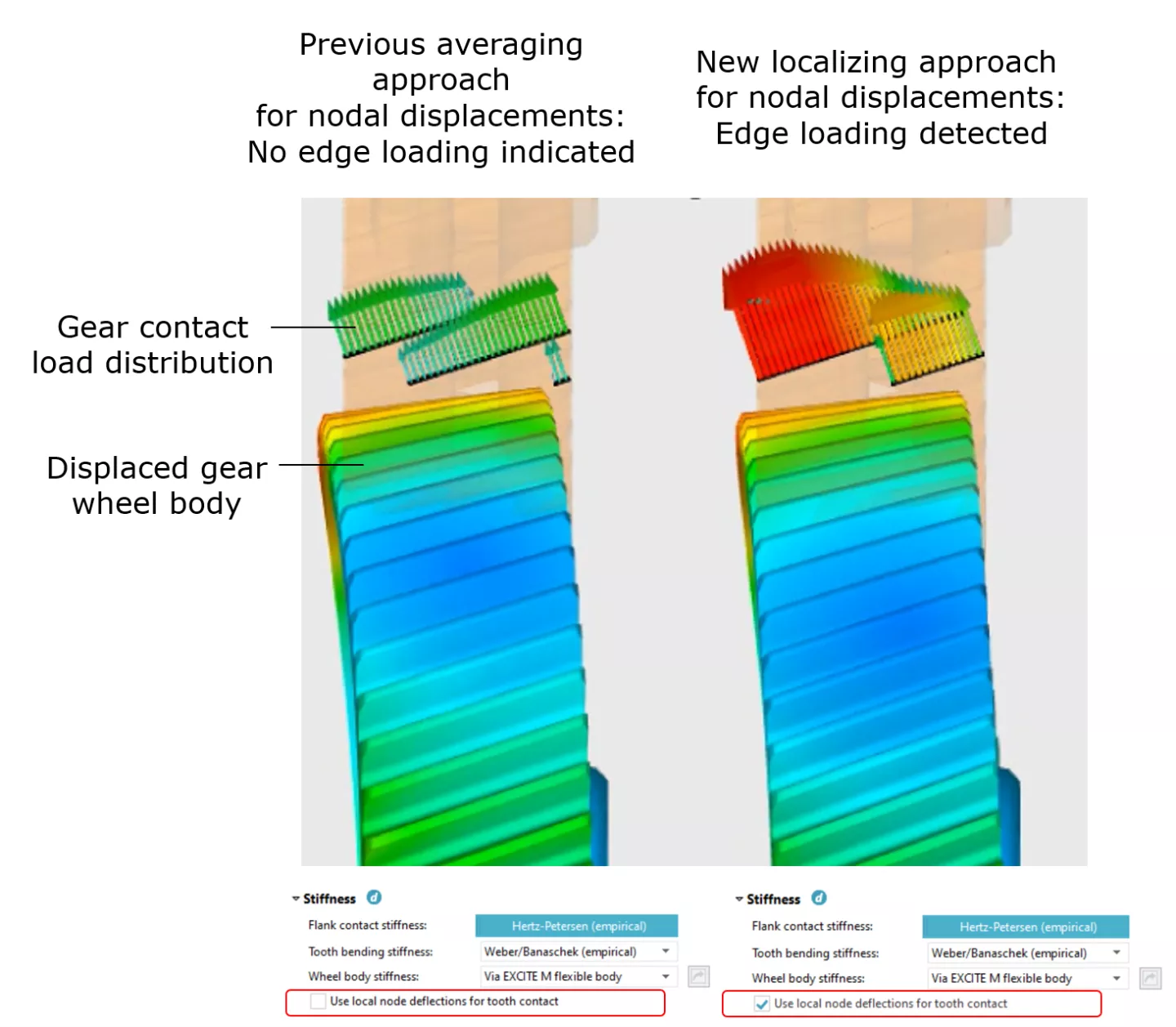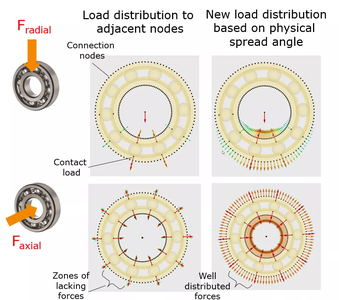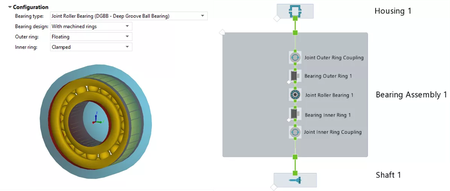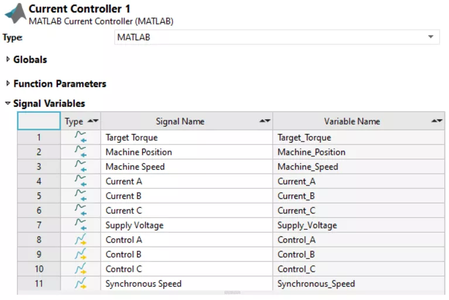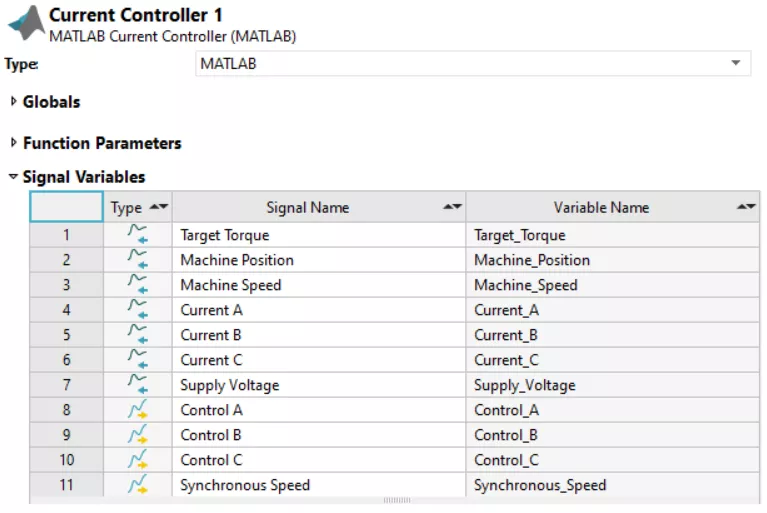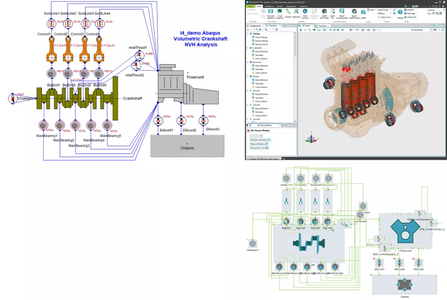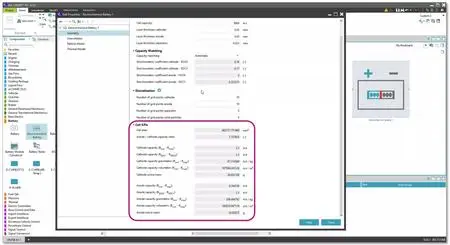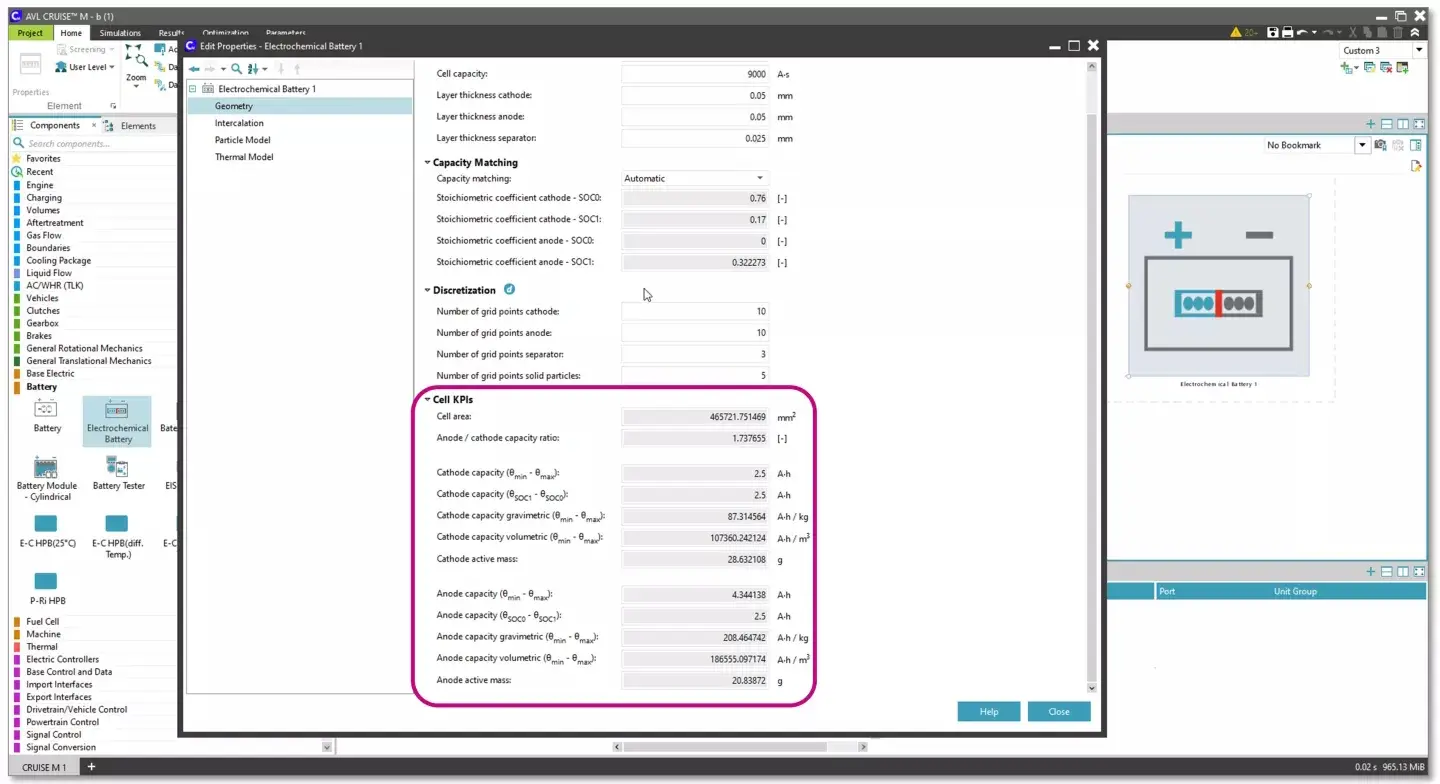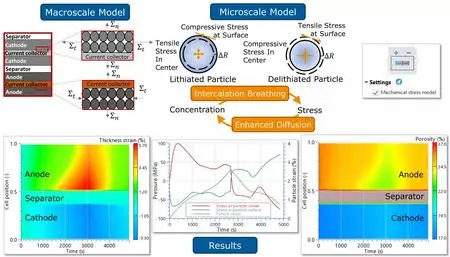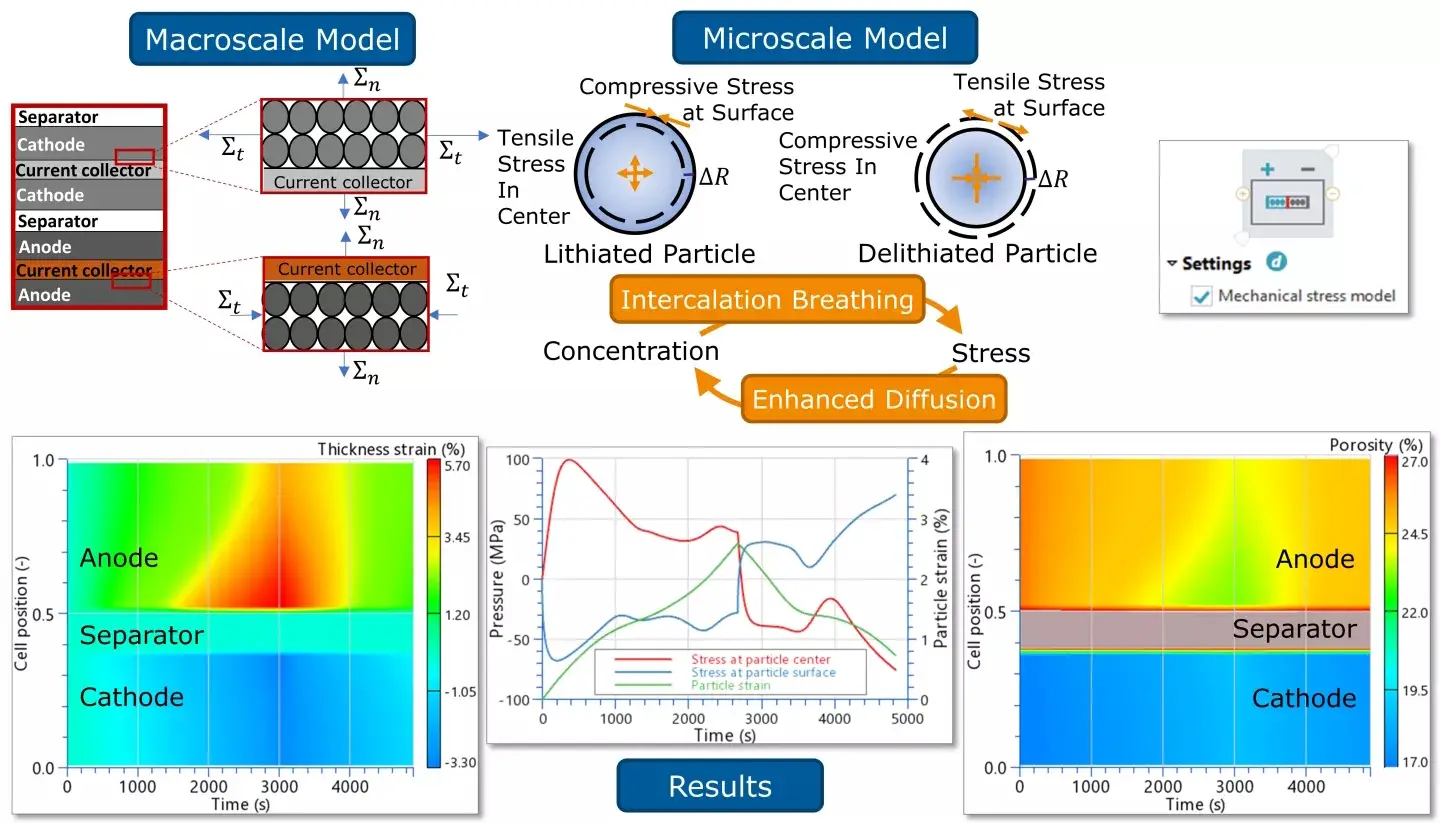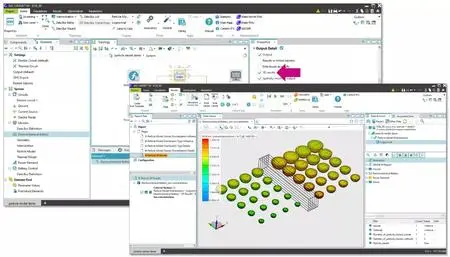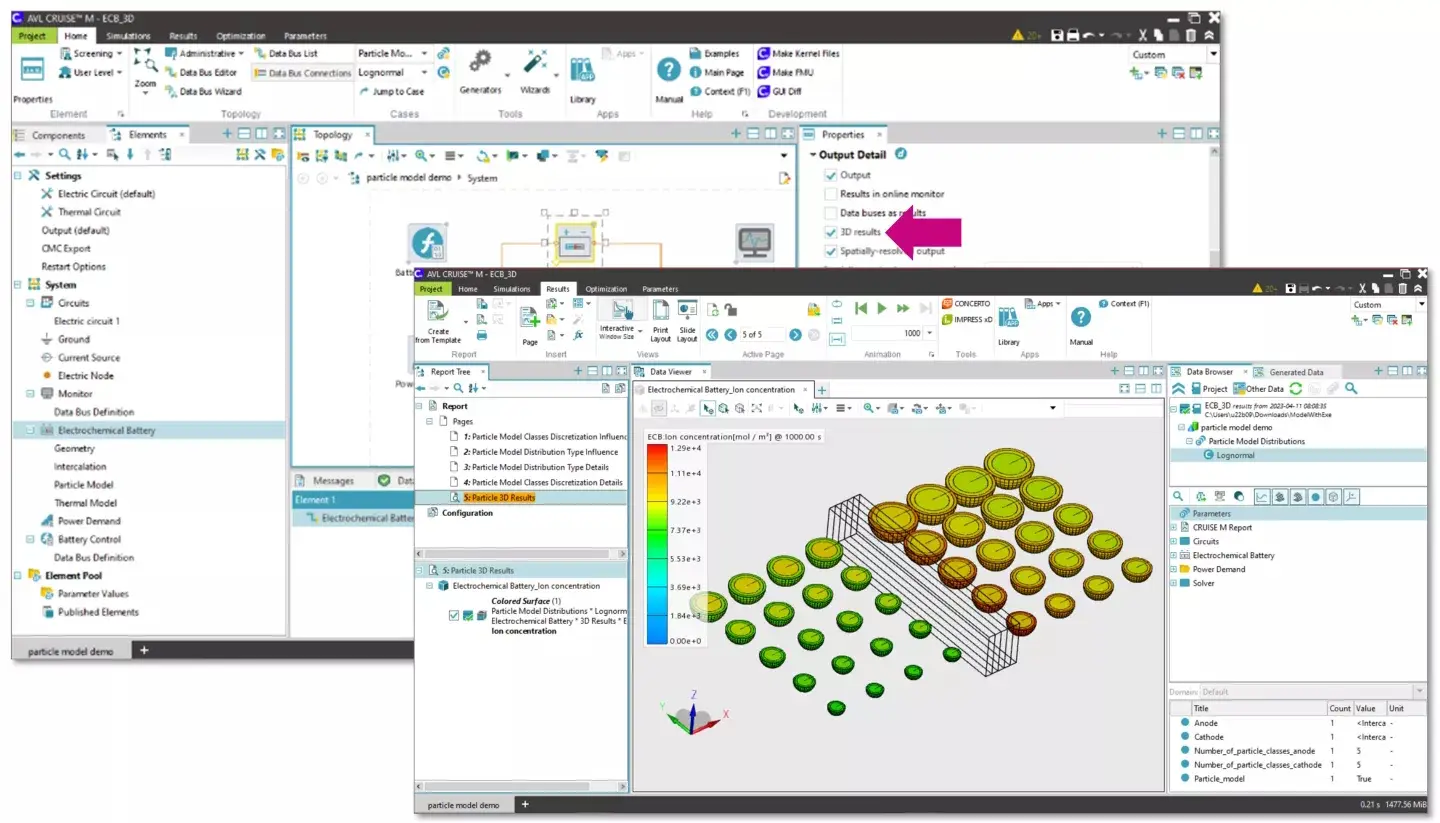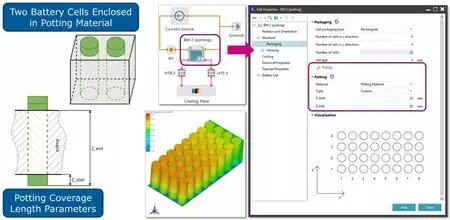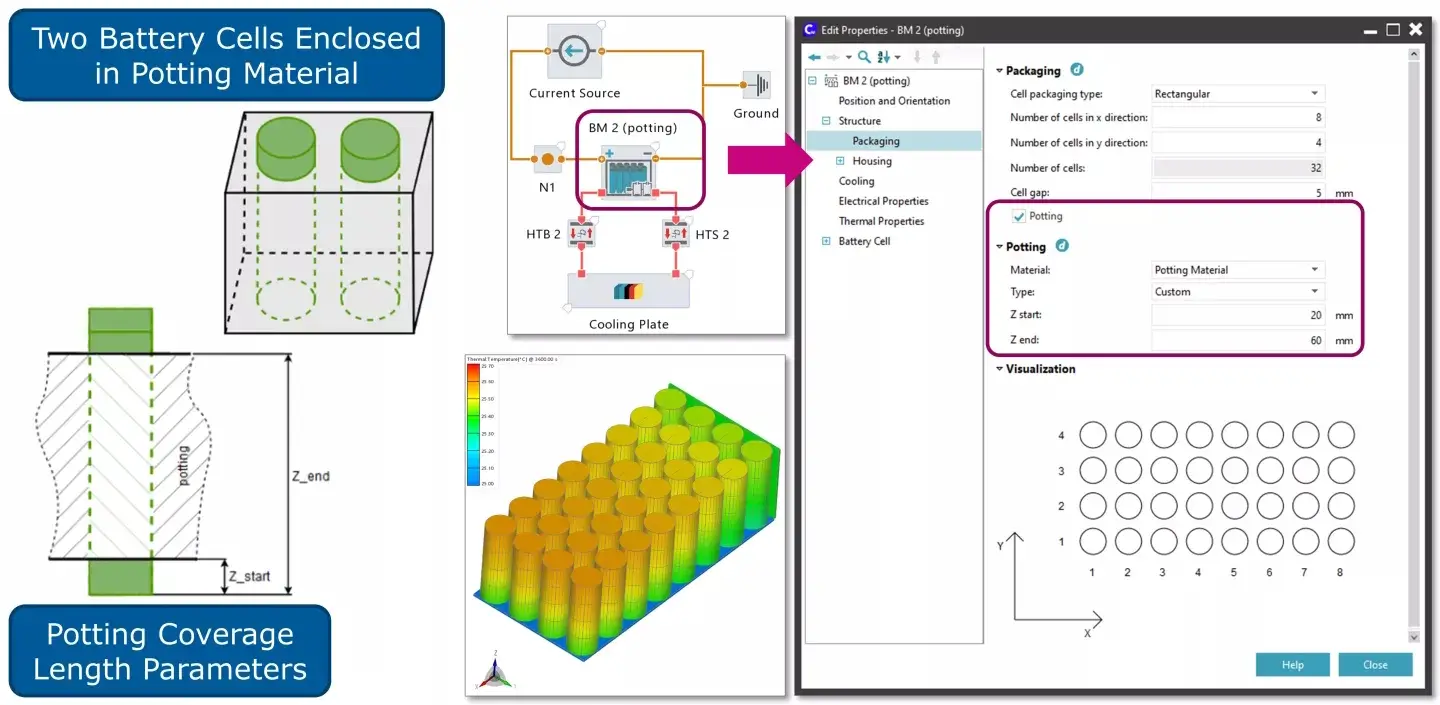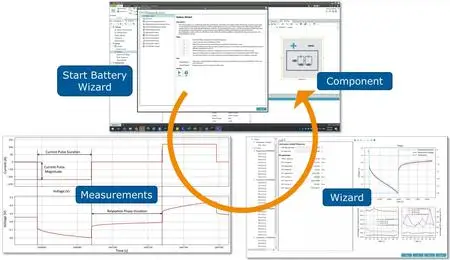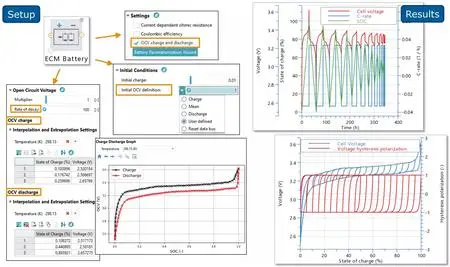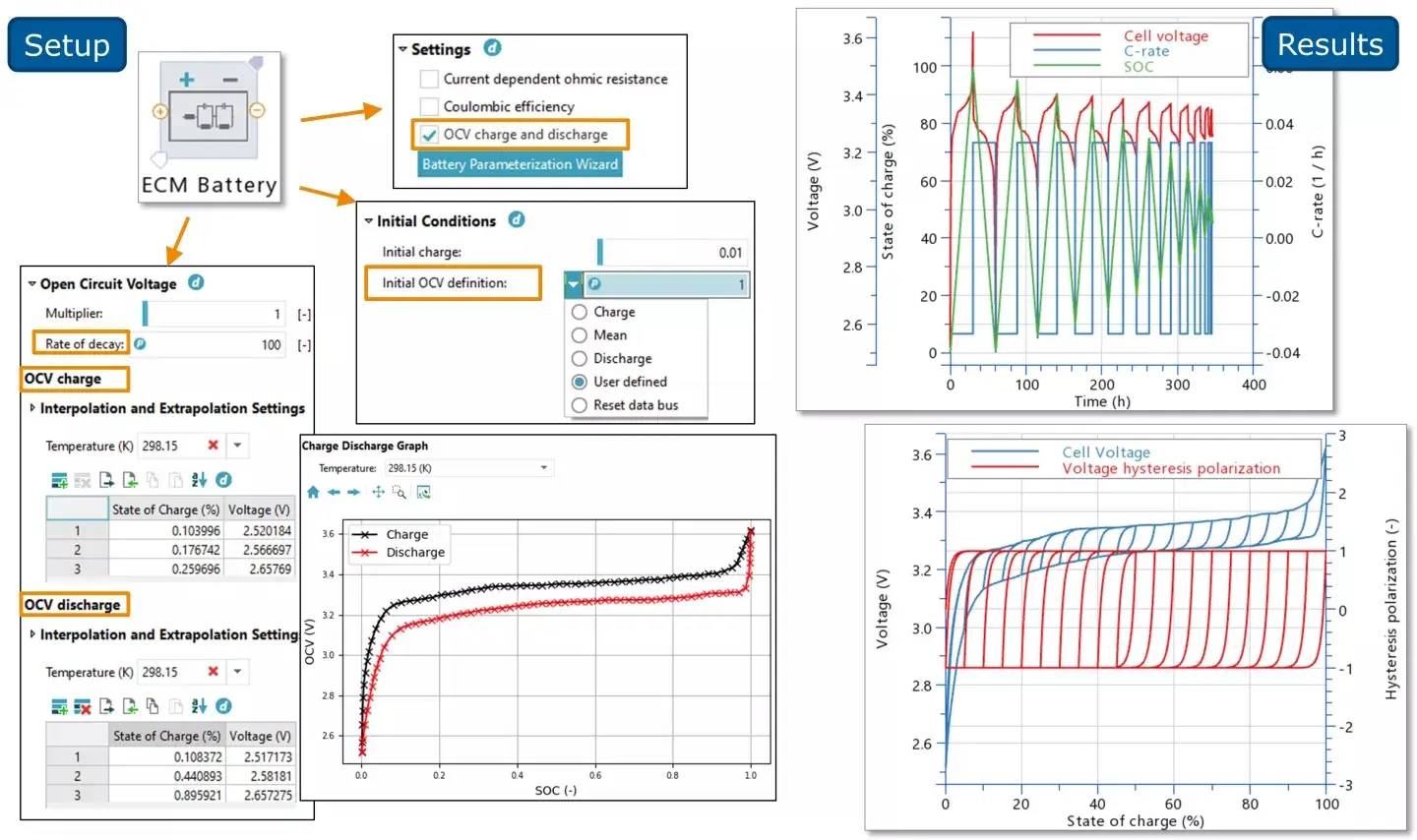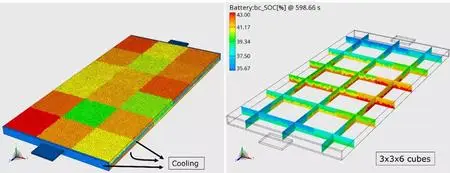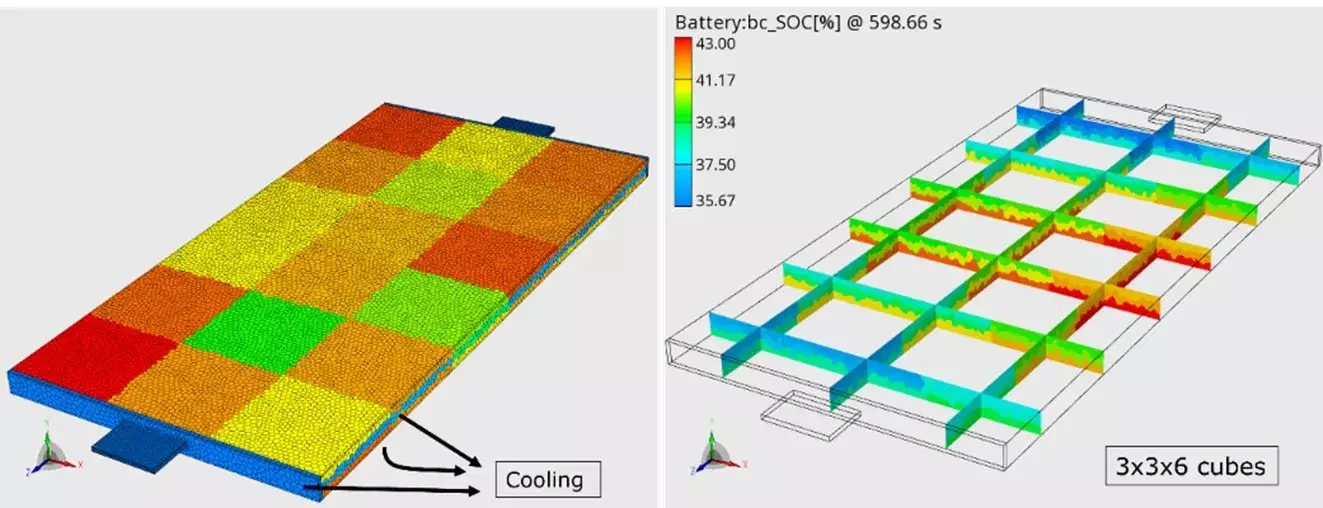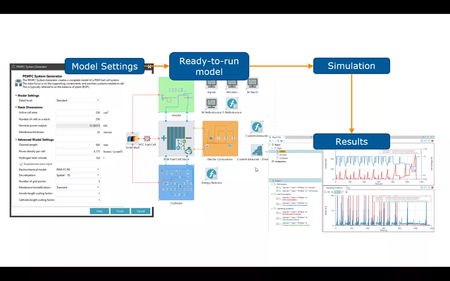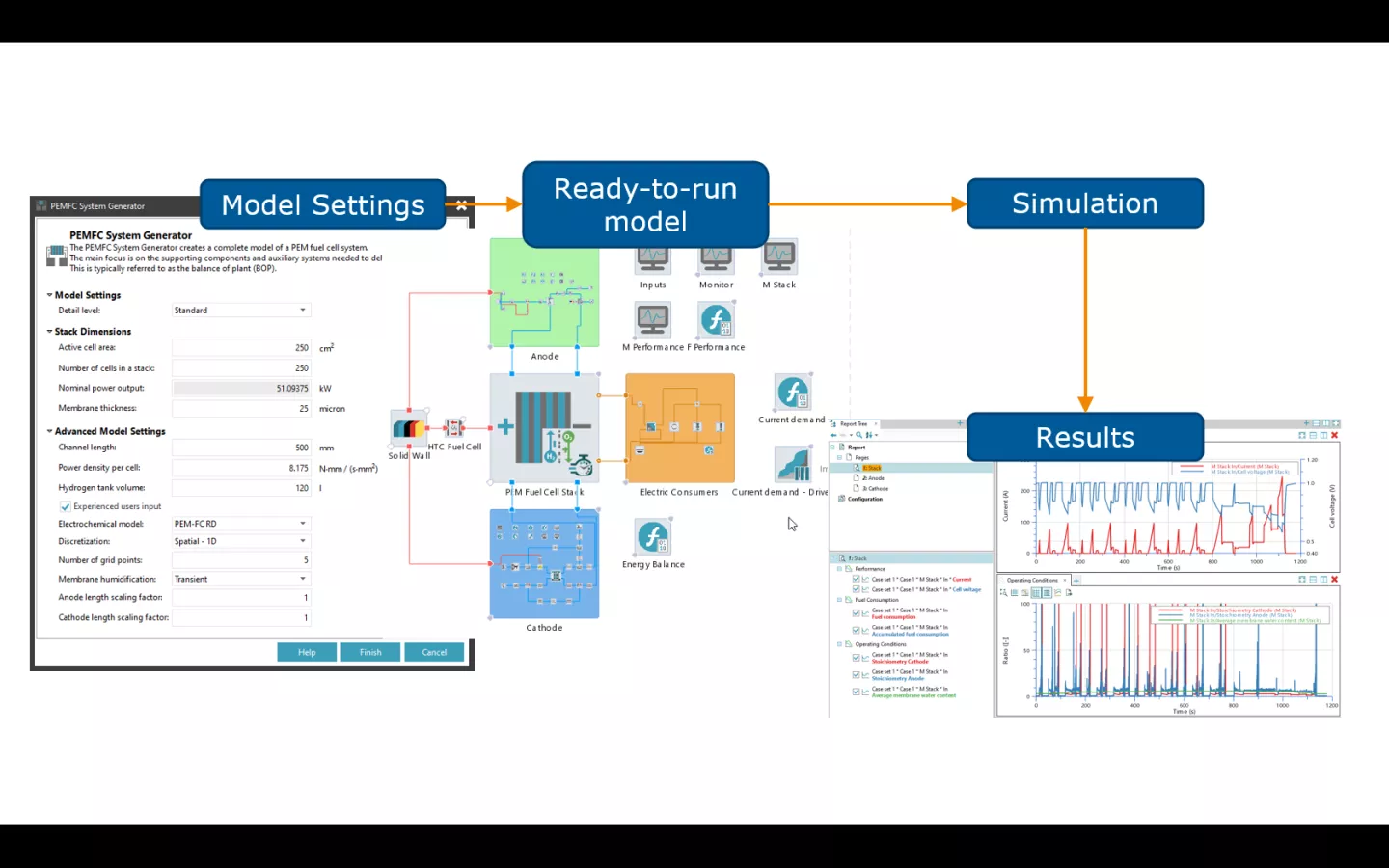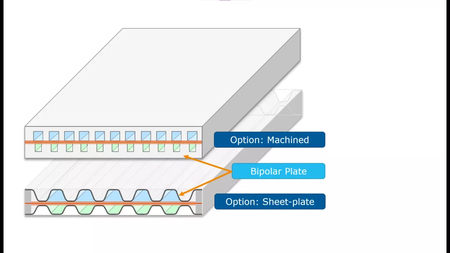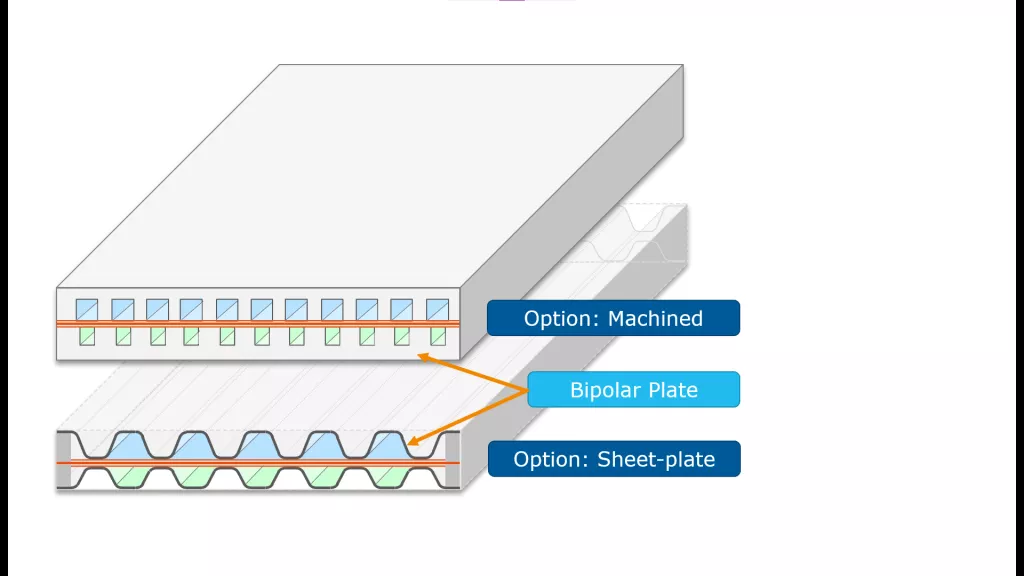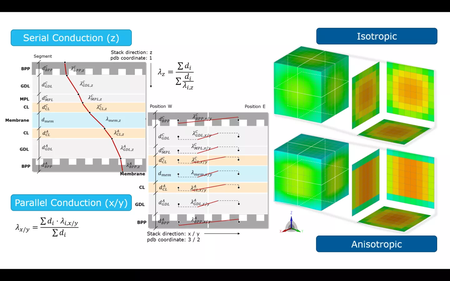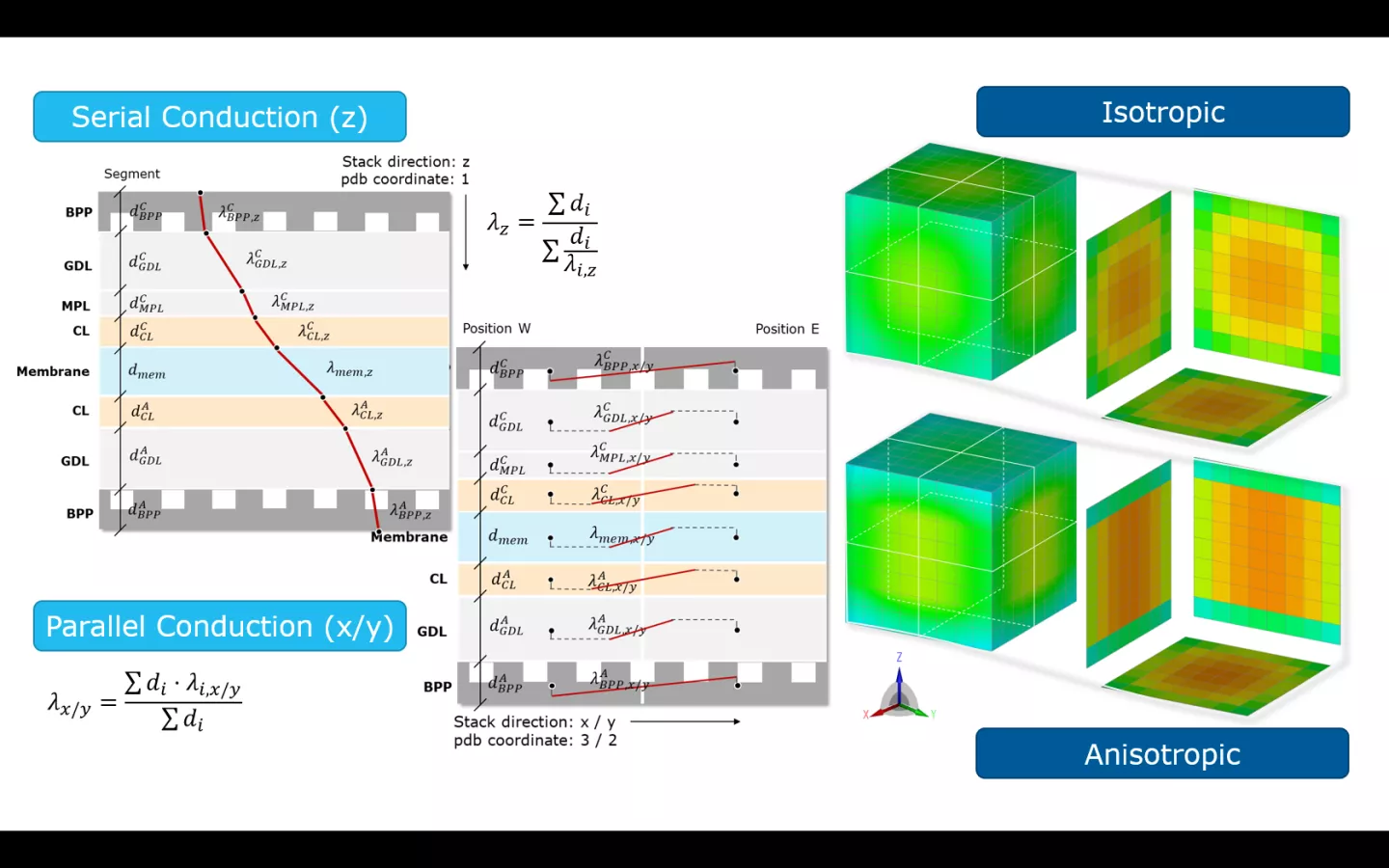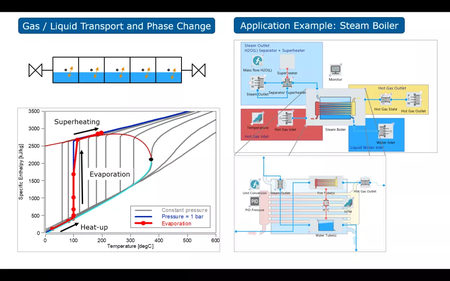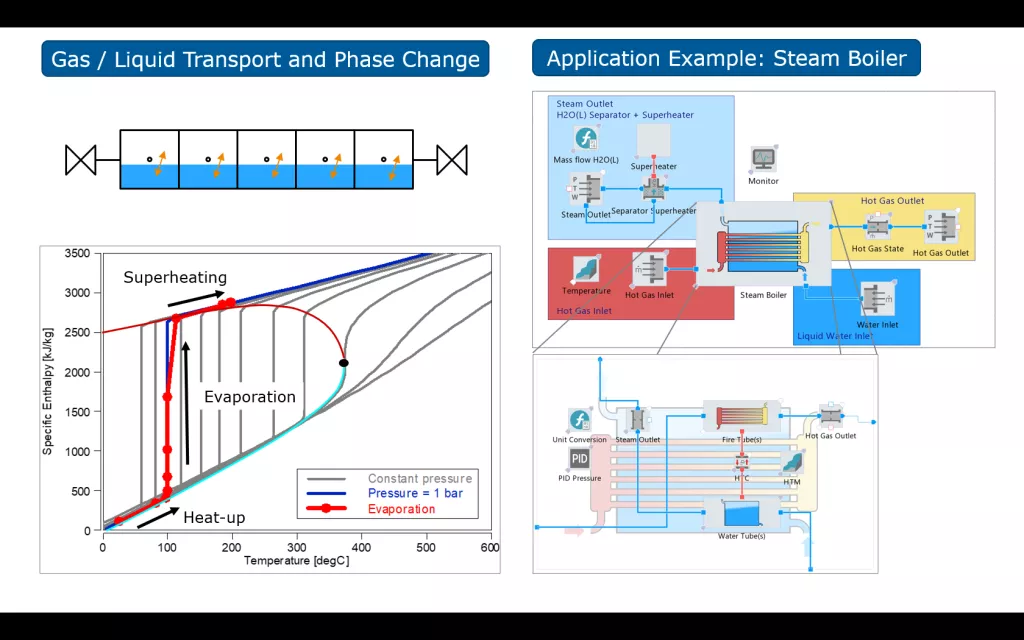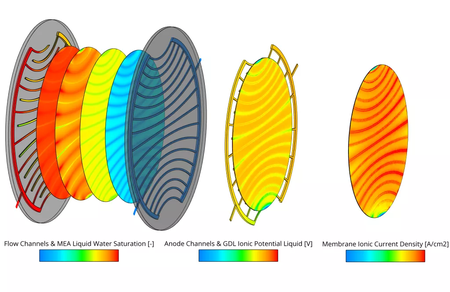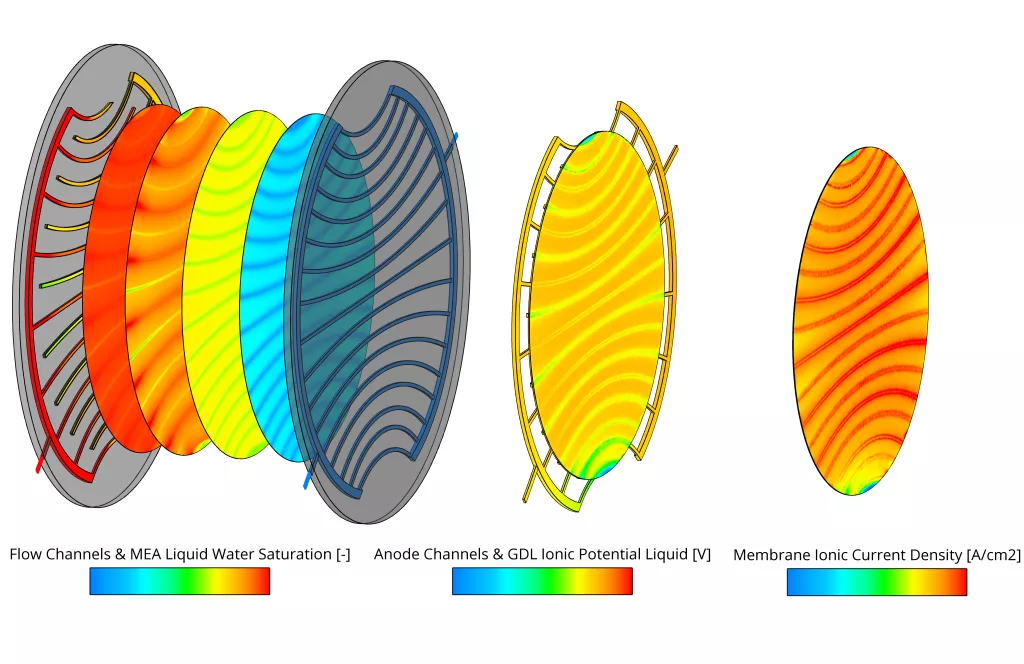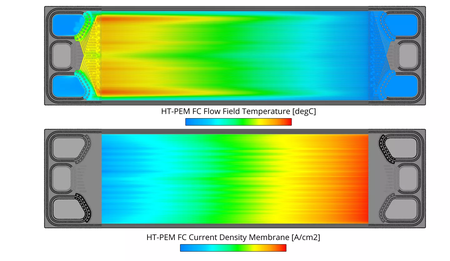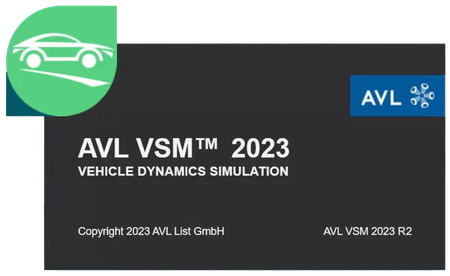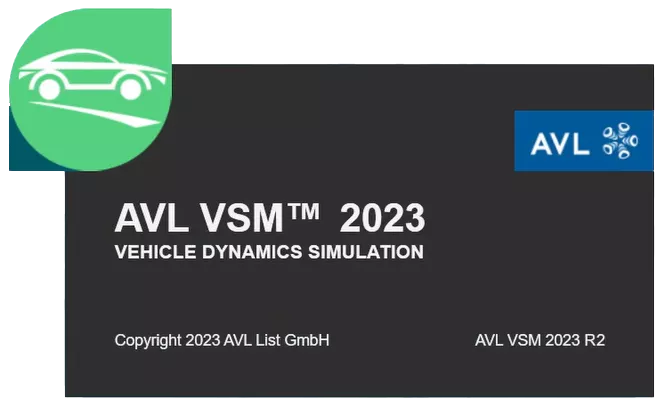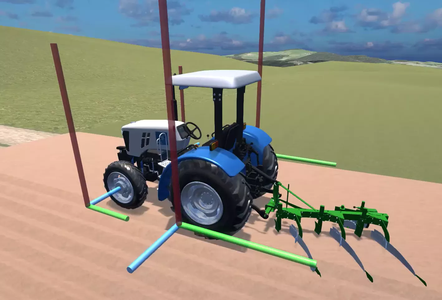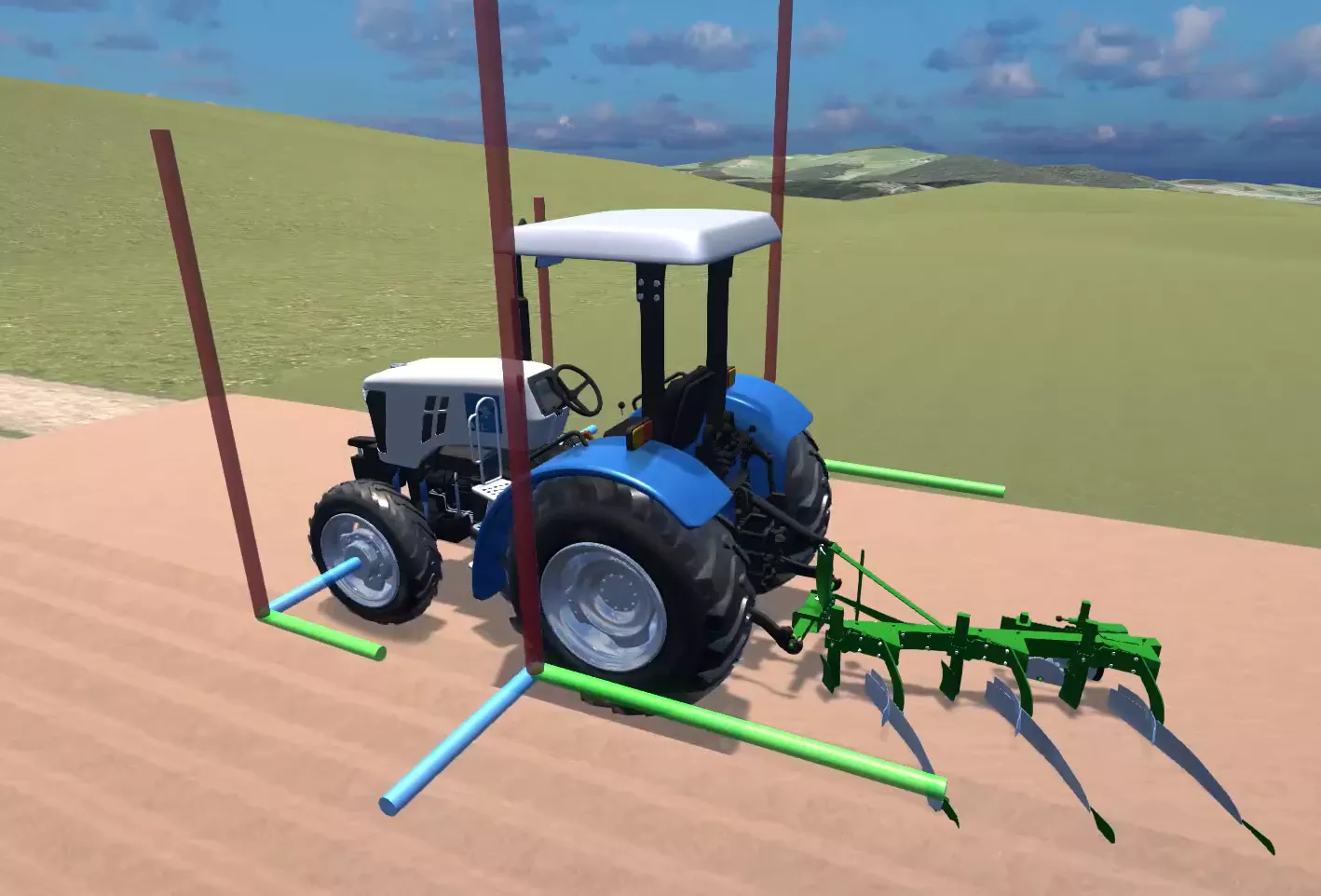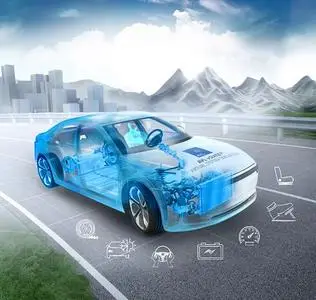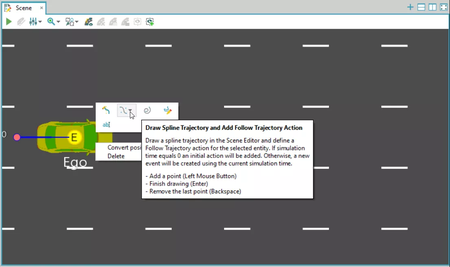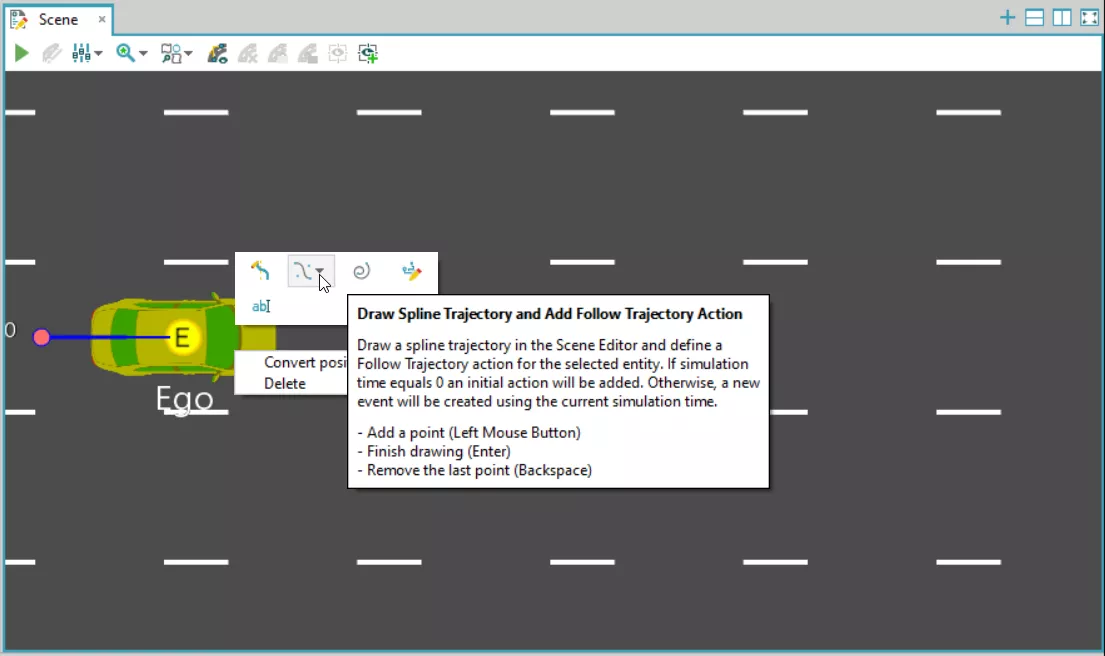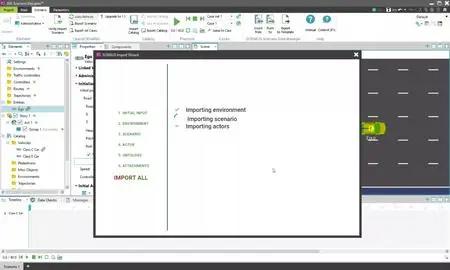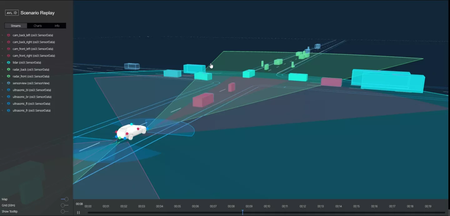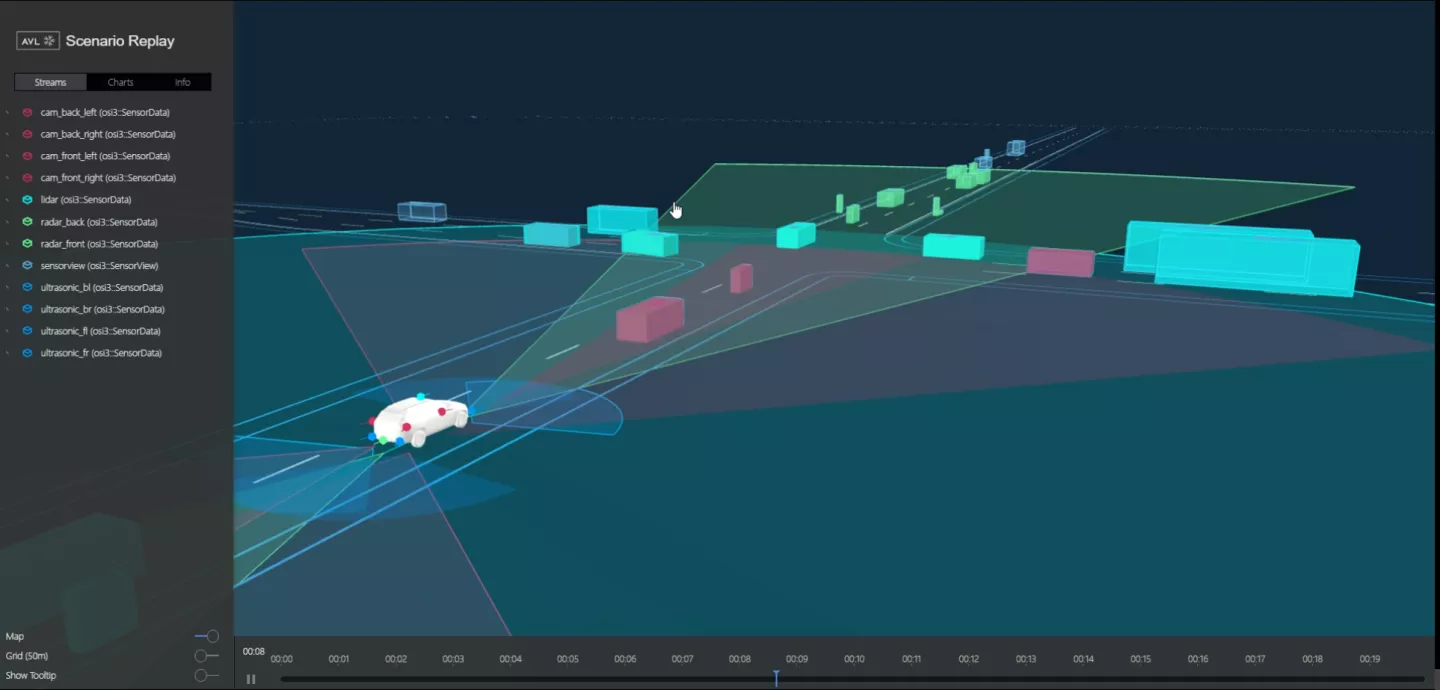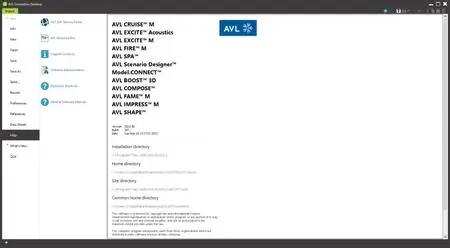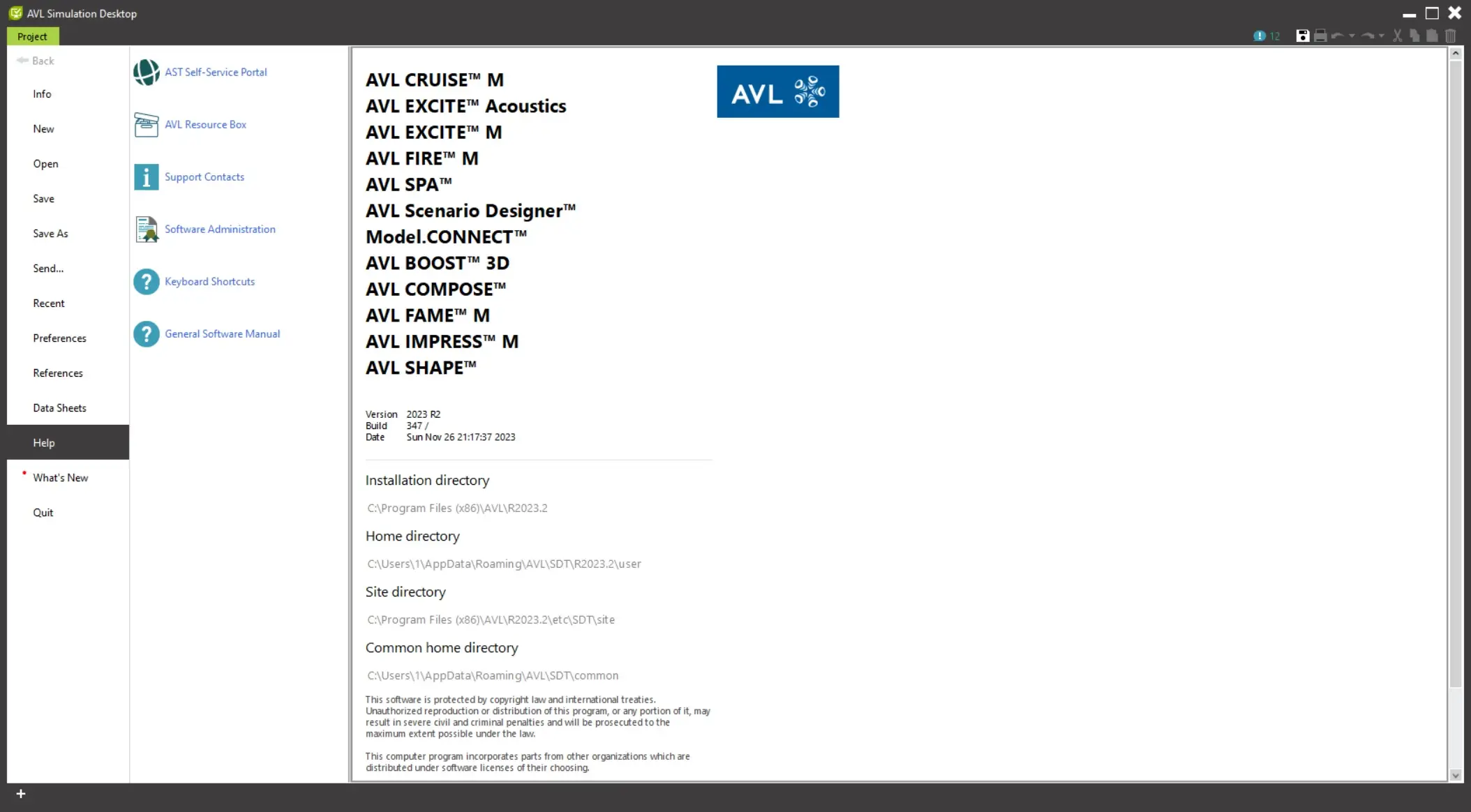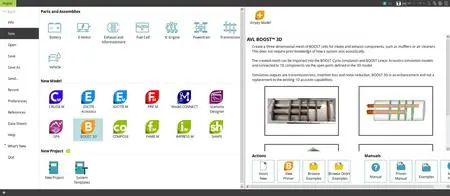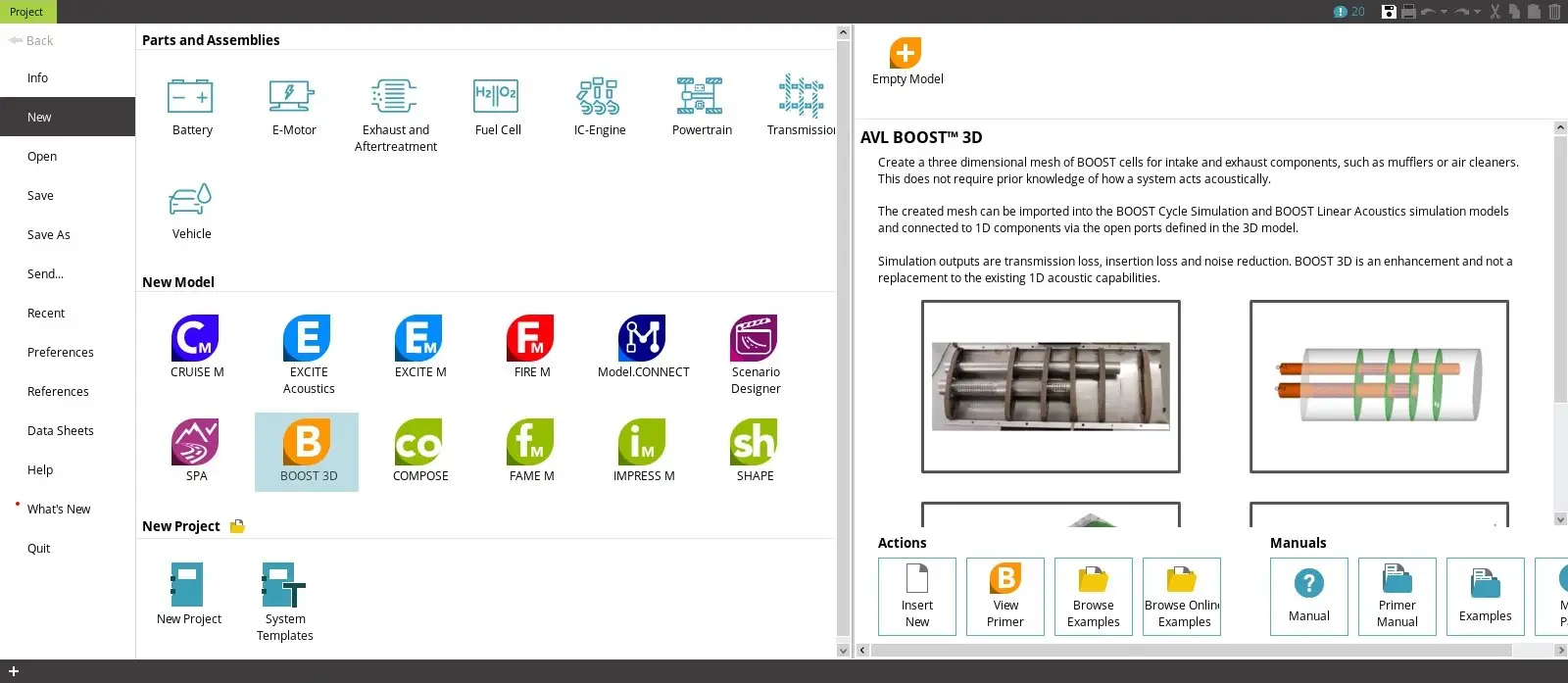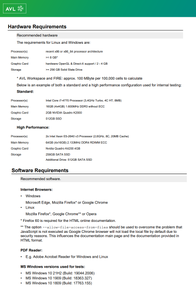AVL Simulation Suite 2023 R2 | 11.0 Gb
AVL is pleased to announce the new release AVL Simulation Suite 2023 R2 is a comprehensive solution that covers all aspects of powertrain concept, the e-motor, e-axle, power electronics, fuel cell, battery and control functions layout and integration.
Release 2023 R2
Import of CAD Data – Accelerated Flow Model Setup
This version of AVL CRUISE™ M facilitates the setup of comprehensive piping systems with a dedicated CAD Importer. When you start the CAD Importer from CRUISE M’s Efficiency Portal, SHAPE opens. It is a tool to import, clean and manipulate CAD data. In SHAPE, you can load the CAD data of your piping system and the tool automatically analyzes the geometry with respect to the needs of a CRUISE M model.
All identified components are enumerated on a dedicated staging list that allows you to inspect data, select/hide components as well as connect components to form bigger assemblies. Once this preparatory work is done, you have the option in an importing process to create the corresponding CRUISE M components only or, alternatively, equip each component additionally with Mass Flow and Pressure Termination components. This gives you a model that is ready to run, including pre-wired monitoring channels on mass flows, pressure losses, Reynolds number, etc. to get immediate feedback on the automatically created piping system.
MPET Heat Exchanger – Parameterization Wizard
Multiport Extruded Tube (MPET) heat exchanger is often used in refrigerant circuits to serve as a condenser or evaporator. CRUISE M offers a tailored MPET heat exchanger component that allows for detailed parameterization of geometry, pressure drop and heat transfer. To support this often demanding work, a new dedicated parameterization wizard is released with this version of CRUISE M.
You only need basic geometric information about your MPET and reference data from measurements or other sources that characterize its behavior under different operating conditions. After a parameterization process, which takes only a few minutes, all parameters are automatically transferred to the genuine MPET Heat Exchanger component, which is then ready to be used in any kind of a VLE circuit.
Heat Exchanger Wizard – Use of Fundamental Transfer Laws
Pre-dimensioning of heat exchangers according to requirements and operating points is an essential task for simulation engineers and indirectly for the tools they use. The heat exchanger dimensioning shall be derived for given geometrical designs and flow patterns at specified powers and mass flows. This version of CRUISE M supports this task with a tailored wizard, helping you to create a completely parameterized gas-liquid heat exchanger from purely geometrical data in the absence of measurements. The application of dimensionless correlations allows for changing component sizes while preserving the fundamental correlations derived by the wizard.
Efficiency Portal – Wizards and Generators
Efficiency is crucial when setting up comprehensive models and parametrizing individual components based on experimental reference data. CRUISE M has been supporting these key areas for many years with a family of more than 20 different generators and wizards. Generators help you set up comprehensive model layouts in the shortest possible time, while wizards provide dedicated parametrization workflows based on experimental or other reference data.
All the powerful functionalities provided by wizards and generators are bundled in a new self-explanatory front end, CRUISE M's Efficiency Portal. You can launch it directly from the ribbon, search for different wizards and generators and learn about the scope, application steps, preconditions and expected results of the different tools.
Functional Mock-up Unit (FMU) Export – Test Harness
When sharing model FMUs, it is advisable to test them upfront. Equipping an FMU with input signals and monitoring all outputs is straightforward in CRUISE M. However, when the number of input and output channels increases, this task might turn cumbersome. CRUISE M helps to accelerate it with a new Test Harness Generator.
You can launch the generator from the Efficiency Portal for any model that is meant to be FMU exported. With that, you are guided to a configuration page where you can assign a certain input type from a drop-down menu for each input channel. The new created model holds nothing but three connected elements: the FMU, the inputs and a monitor for the outputs. Ready to run.
FMU Import – Electrical FMU with Tailored Interface
Simulating electrical networks on its own is a computationally demanding task and extending it with FMUs can turn it into a true challenge that calls for any possible specialization to be fast and robust. CRUISE M offers such an approach with its new electrical FMU component. You can load either a co-simulation or model exchange FMU of an electrical component and you can configure its kind. Four options are offered, current- or voltage-driven inputs with and without additional information on the current or voltage sensitivity. With that, you are all set to start a simulation, and CRUISE M efficiently invokes your component model into its equation system.
This version of AVL CRUISE™ M facilitates the setup of comprehensive piping systems with a dedicated CAD Importer. When you start the CAD Importer from CRUISE M’s Efficiency Portal, SHAPE opens. It is a tool to import, clean and manipulate CAD data. In SHAPE, you can load the CAD data of your piping system and the tool automatically analyzes the geometry with respect to the needs of a CRUISE M model.
All identified components are enumerated on a dedicated staging list that allows you to inspect data, select/hide components as well as connect components to form bigger assemblies. Once this preparatory work is done, you have the option in an importing process to create the corresponding CRUISE M components only or, alternatively, equip each component additionally with Mass Flow and Pressure Termination components. This gives you a model that is ready to run, including pre-wired monitoring channels on mass flows, pressure losses, Reynolds number, etc. to get immediate feedback on the automatically created piping system.
MPET Heat Exchanger – Parameterization Wizard
Multiport Extruded Tube (MPET) heat exchanger is often used in refrigerant circuits to serve as a condenser or evaporator. CRUISE M offers a tailored MPET heat exchanger component that allows for detailed parameterization of geometry, pressure drop and heat transfer. To support this often demanding work, a new dedicated parameterization wizard is released with this version of CRUISE M.
You only need basic geometric information about your MPET and reference data from measurements or other sources that characterize its behavior under different operating conditions. After a parameterization process, which takes only a few minutes, all parameters are automatically transferred to the genuine MPET Heat Exchanger component, which is then ready to be used in any kind of a VLE circuit.
Heat Exchanger Wizard – Use of Fundamental Transfer Laws
Pre-dimensioning of heat exchangers according to requirements and operating points is an essential task for simulation engineers and indirectly for the tools they use. The heat exchanger dimensioning shall be derived for given geometrical designs and flow patterns at specified powers and mass flows. This version of CRUISE M supports this task with a tailored wizard, helping you to create a completely parameterized gas-liquid heat exchanger from purely geometrical data in the absence of measurements. The application of dimensionless correlations allows for changing component sizes while preserving the fundamental correlations derived by the wizard.
Efficiency Portal – Wizards and Generators
Efficiency is crucial when setting up comprehensive models and parametrizing individual components based on experimental reference data. CRUISE M has been supporting these key areas for many years with a family of more than 20 different generators and wizards. Generators help you set up comprehensive model layouts in the shortest possible time, while wizards provide dedicated parametrization workflows based on experimental or other reference data.
All the powerful functionalities provided by wizards and generators are bundled in a new self-explanatory front end, CRUISE M's Efficiency Portal. You can launch it directly from the ribbon, search for different wizards and generators and learn about the scope, application steps, preconditions and expected results of the different tools.
Functional Mock-up Unit (FMU) Export – Test Harness
When sharing model FMUs, it is advisable to test them upfront. Equipping an FMU with input signals and monitoring all outputs is straightforward in CRUISE M. However, when the number of input and output channels increases, this task might turn cumbersome. CRUISE M helps to accelerate it with a new Test Harness Generator.
You can launch the generator from the Efficiency Portal for any model that is meant to be FMU exported. With that, you are guided to a configuration page where you can assign a certain input type from a drop-down menu for each input channel. The new created model holds nothing but three connected elements: the FMU, the inputs and a monitor for the outputs. Ready to run.
FMU Import – Electrical FMU with Tailored Interface
Simulating electrical networks on its own is a computationally demanding task and extending it with FMUs can turn it into a true challenge that calls for any possible specialization to be fast and robust. CRUISE M offers such an approach with its new electrical FMU component. You can load either a co-simulation or model exchange FMU of an electrical component and you can configure its kind. Four options are offered, current- or voltage-driven inputs with and without additional information on the current or voltage sensitivity. With that, you are all set to start a simulation, and CRUISE M efficiently invokes your component model into its equation system.
AVL CRUISE M Rotary Piston Engine
In comparison to reciprocating piston engines, rotary piston engines offer a higher power to weight ratio, are easier to install in small spaces and operate with almost no vibration. This makes them the preferred solution for applications that benefit from precisely these advantages.
This version of AVL CRUISE M offers a dedicated rotary piston engine component. You can pull it from the component library into the workspace. Different injection types (direct or external) are offered. CRUISE M automatically creates a macro element that holds rotor components which themselves are built from basic blocks for combustion chambers, intake and exhaust ports, leakage flows and injectors.
The full set of combustion and pollutant formation models known from the reciprocating piston engine can also be applied to the rotary piston engine.
An installation example is provided to help you get started with your rotary piston engine project.
AVL CRUISE M Enhancements of Engineering Enhanced Cylinders & Wizards
The Engineering Enhanced Cylinder components and Wizards for gasoline and diesel engines have been enhanced with several functionalities:
- Diesel Wizard: The wizard now takes into account the fuel density as specified in the fuel properties file. This refinement is added to existing considerations of fuel properties like lower heating value, stoichiometric air to fuel ratio and fuel composition from H, C and O atoms. Furthermore, the wizard has been improved to more accurately incorporate the conditions upstream of the combustion chamber when Exhaust Gas Recirculation (EGR) is present. The composition of species and excess air ratio, given as a mixture of fresh air and recirculated exhaust gas, are now calculated in the exact same way as they occur when a full air path is modeled. The performance of the wizard has been improved by allowing more iterations during its optimization procedure.
- Gasoline Cylinder: The cylinder model has been enhanced with additional parameters to offset the individual combustion submodels. This ensures further flexibility during the parametrization process of SI combustion. The combined threshold to distinguish between the low and high load parts of the wall heat and the high-pressure IMEP models are now split into two separate parameters. This allows the threshold to be specified individually for each of the models, facilitating a more straightforward parametrization of the combustion. Furthermore, adaptations of the combustion models have been implemented, to represent state-of-the-art engines even more accurately.
AVL FIRE M Extension of the ECFM-3Z Combustion Model
To support efforts to reduce greenhouse gas emissions, the use of hydrocarbon-free fuels is being discussed. The first engines powered by hydrogen or ammonia are already being used in trucks and ships. Depending on the fuel type and engine/vehicle application, spark plugs or diesel injection are used to ignite the fuel.
After spark-ignited hydrogen (and ammonia) engines can already be simulated with the status of the ECFM-3Z model in 2023 R1, the model has been expanded again to be able now to simulate diesel-ignited variants with 2023 R2.
Using the new ECFM-3Z model allows to perform these simulations more efficiently compared to solving the typically large hydrocarbon reaction schemes by deploying the GGPR module.
AVL FIRE M Heterogeneous chemistry model
Heterogeneous surface reaction modelling capabilities are needed to compute the conversion of species in exhaust gas aftertreatment components of ICE-based powertrains. In addition to that, these capabilities are nowadays also required for fuel cell and fuel reformer simulations. With 2023 R2, the heterogeneous surface reaction module is available in AVL FIRE M, ready for use in the above mentioned applications. In addition to making the module available, it has been extended compared to the status known from AVL FIRE™ Classic, for compatibility with the User Coding Interface (UCI) of CRUISE M. UCI allows to conveniently define and use arbitrary user-tailored reaction schemes and transfer model.
AVL FIRE M Multiphase and General Gas Phase Reactions
With this new release of FIRE M, the General Gas Phase Reaction (GGPR) model along with activated Species Transport can be used with the Eulerian Multiphase models, both the Multi-fluid and the Volume-of-fluid model. This allows, for example, to model the decomposition of urea through the thermolysis-hydrolysis process using the "Urea Thermolysis" mass exchange model in the multiphase framework.
In comparison to reciprocating piston engines, rotary piston engines offer a higher power to weight ratio, are easier to install in small spaces and operate with almost no vibration. This makes them the preferred solution for applications that benefit from precisely these advantages.
This version of AVL CRUISE M offers a dedicated rotary piston engine component. You can pull it from the component library into the workspace. Different injection types (direct or external) are offered. CRUISE M automatically creates a macro element that holds rotor components which themselves are built from basic blocks for combustion chambers, intake and exhaust ports, leakage flows and injectors.
The full set of combustion and pollutant formation models known from the reciprocating piston engine can also be applied to the rotary piston engine.
An installation example is provided to help you get started with your rotary piston engine project.
AVL CRUISE M Enhancements of Engineering Enhanced Cylinders & Wizards
The Engineering Enhanced Cylinder components and Wizards for gasoline and diesel engines have been enhanced with several functionalities:
- Diesel Wizard: The wizard now takes into account the fuel density as specified in the fuel properties file. This refinement is added to existing considerations of fuel properties like lower heating value, stoichiometric air to fuel ratio and fuel composition from H, C and O atoms. Furthermore, the wizard has been improved to more accurately incorporate the conditions upstream of the combustion chamber when Exhaust Gas Recirculation (EGR) is present. The composition of species and excess air ratio, given as a mixture of fresh air and recirculated exhaust gas, are now calculated in the exact same way as they occur when a full air path is modeled. The performance of the wizard has been improved by allowing more iterations during its optimization procedure.
- Gasoline Cylinder: The cylinder model has been enhanced with additional parameters to offset the individual combustion submodels. This ensures further flexibility during the parametrization process of SI combustion. The combined threshold to distinguish between the low and high load parts of the wall heat and the high-pressure IMEP models are now split into two separate parameters. This allows the threshold to be specified individually for each of the models, facilitating a more straightforward parametrization of the combustion. Furthermore, adaptations of the combustion models have been implemented, to represent state-of-the-art engines even more accurately.
AVL FIRE M Extension of the ECFM-3Z Combustion Model
To support efforts to reduce greenhouse gas emissions, the use of hydrocarbon-free fuels is being discussed. The first engines powered by hydrogen or ammonia are already being used in trucks and ships. Depending on the fuel type and engine/vehicle application, spark plugs or diesel injection are used to ignite the fuel.
After spark-ignited hydrogen (and ammonia) engines can already be simulated with the status of the ECFM-3Z model in 2023 R1, the model has been expanded again to be able now to simulate diesel-ignited variants with 2023 R2.
Using the new ECFM-3Z model allows to perform these simulations more efficiently compared to solving the typically large hydrocarbon reaction schemes by deploying the GGPR module.
AVL FIRE M Heterogeneous chemistry model
Heterogeneous surface reaction modelling capabilities are needed to compute the conversion of species in exhaust gas aftertreatment components of ICE-based powertrains. In addition to that, these capabilities are nowadays also required for fuel cell and fuel reformer simulations. With 2023 R2, the heterogeneous surface reaction module is available in AVL FIRE M, ready for use in the above mentioned applications. In addition to making the module available, it has been extended compared to the status known from AVL FIRE™ Classic, for compatibility with the User Coding Interface (UCI) of CRUISE M. UCI allows to conveniently define and use arbitrary user-tailored reaction schemes and transfer model.
AVL FIRE M Multiphase and General Gas Phase Reactions
With this new release of FIRE M, the General Gas Phase Reaction (GGPR) model along with activated Species Transport can be used with the Eulerian Multiphase models, both the Multi-fluid and the Volume-of-fluid model. This allows, for example, to model the decomposition of urea through the thermolysis-hydrolysis process using the "Urea Thermolysis" mass exchange model in the multiphase framework.
Hydrodynamic Joints in AVL EXCITE M
The well-known hydrodynamic (HD) joint group from EXCITE Power Unit has now been migrated to EXCITE M. This group consists of the Advanced Axial Slider Bearing (AXHD), Advanced Radial Slider Bearing (EHD2), and the Advanced Sliding Guide (EPIL). This transition not only encompasses a new GUI for the HD joint group, but also simplifies and improves many model configurations with better visualization opportunities, data checking and integrated workflows within the AVL Simulation Desktop environment. This includes the usage of data pool elements and live scripting, to name a few.
New Method to Consider Localized Gear Wheel Body Node Deflections at Tooth Contact
The Advanced Cylindrical Gear Joint (ACYG) has been capable of considering flexible gear wheel body deflections from circumferential nodes placed at the root of the teeth. However, the applied mapping method performs some averaging, resulting in specific gear wheel body deflection shapes (such as the well-known "potato-chip" mode) not being sufficiently reflected in the contact-load distribution between the individual teeth. A new mapping method has been introduced as an option, considering only body deflections that are affected by the gear contact. With this method, local body modes will influence the development of the gear contact pattern in a much more realistic way.
Existing models using "Wheel body stiffness" = "Via EXCITE M flexible body" will not be automatically migrated to the new mapping method. Should the new method be desired, it requires explicit activation.
Rolling Element Bearing Joints
To ensure a more physical transmissibility of contact loads to circumferential connection nodes, a new approach has been implemented. It assumes a spread angle within which the single contact loads are applied to the connected structure. By that the load distribution effect due to the ring and seat rigidity is approximated and the load transfer becomes smoother and thus more realistic. As a result, unwanted artificial excitation effects are significantly reduced.
The modeling process of floating bearing systems and preloaded bearings is time-consuming and requires significant manual effort. Floating bearing configurations require the outer and inner ring to be modeled as separate bodies. You need to create, configure, and connect these bodies and the required joints. Moreover, you need to set the mass and inertia of the rings.
The predefined assembly automatically creates the ring bodies, inserts, and connects the required joints, estimates the mass and inertia of the rings, applies the preload on the related bodies, and automatically positions the rings. This assembly reduces the modeling time and ensures a proper modeling of the ring bodies.
Controller Refinements
The target speed and torque limit input of the Speed Controller can now be defined via 1D tables directly in the component dialog. Additionally, it is now possible to define separate lower and upper torque limits.
For quasi-stationary simulations, where the target speed for the controller is constant, a new "Initiation Interval" gain type has been added. With this option the controller gains are reduced to zero after a defined initiation phase. This way, only the main speed of the system is controlled, but other oscillations in the system are preserved.
For the Angle Discrete Speed Controller, the controller gains can now be defined based on speed using the new "Speed Dependent" gain type. This is necessary for run-up simulations with large differences in the speed of the system in order to guarantee a good controller performance for the whole speed range. For a simpler usage, default values are provided. However, you also have the option to manually input values to further tune the controller, if necessary.
EXCITE M provides a dedicated current controller for each e-motor type. It realizes the standard control strategy for transient drive. Moreover, the modulator offers the common strategy for field-oriented control.
Actual current controllers might not fit into this framework, but their differences might be relevant to dynamic interaction with the electric system. For this reason, an open current controller is offered as an alternative to the built-in variants. Relevant input and output signals are exchanged to three different platforms: MATLAB Simulink, Model.CONNECT™ and Compiled Function that allows C-based function coding.
To simplify the connection between the e-motor and inverter in EXCITE M and the control, an example is shipped that contains a Simulink representation of the built-in controller for a permanent magnet synchronous motor.
A time delay of one step is applied in EXCITE M to avoid an algebraic loop. Furthermore, with the open controller, switching events are handled only with the subsequent time step, whereas the built-in modulator triggers time events to switch at the actual time.
Export AVL EXCITE Power Unit models to AVL EXCITE M
We have added the ability to export models from EXCITE Power Unit to EXCITE M. You can export entire models or just selected elements, as well as parts merged to existing models.
Models converted to EXCITE M will not look the same as in EXCITE Power Unit, and input parameters may be moved to different locations. EXCITE M strictly separates the data related to bodies and joints, keeping the geometry information on the bodies. Load applications and predefined motions for bodies are also specified in a different way than in EXCITE Power Unit. The export feature converts as much data as possible into the new EXCITE M model, but due to the differences in modeling, it is recommended to carefully inspect the exported model and in many cases it will pay off to manually adjust the models after export to make the best use of the new capabilities of EXCITE M.
There are some limitations in the first release of the export feature. The following joint types and model parts are not yet supported:
- EMC joint
- External model connections (Matlab)
- Valve Train subsystems
- Joints that are not yet available in EXCITE M like BELT, SLS, UNIV, etc.
The well-known hydrodynamic (HD) joint group from EXCITE Power Unit has now been migrated to EXCITE M. This group consists of the Advanced Axial Slider Bearing (AXHD), Advanced Radial Slider Bearing (EHD2), and the Advanced Sliding Guide (EPIL). This transition not only encompasses a new GUI for the HD joint group, but also simplifies and improves many model configurations with better visualization opportunities, data checking and integrated workflows within the AVL Simulation Desktop environment. This includes the usage of data pool elements and live scripting, to name a few.
New Method to Consider Localized Gear Wheel Body Node Deflections at Tooth Contact
The Advanced Cylindrical Gear Joint (ACYG) has been capable of considering flexible gear wheel body deflections from circumferential nodes placed at the root of the teeth. However, the applied mapping method performs some averaging, resulting in specific gear wheel body deflection shapes (such as the well-known "potato-chip" mode) not being sufficiently reflected in the contact-load distribution between the individual teeth. A new mapping method has been introduced as an option, considering only body deflections that are affected by the gear contact. With this method, local body modes will influence the development of the gear contact pattern in a much more realistic way.
Existing models using "Wheel body stiffness" = "Via EXCITE M flexible body" will not be automatically migrated to the new mapping method. Should the new method be desired, it requires explicit activation.
Rolling Element Bearing Joints
To ensure a more physical transmissibility of contact loads to circumferential connection nodes, a new approach has been implemented. It assumes a spread angle within which the single contact loads are applied to the connected structure. By that the load distribution effect due to the ring and seat rigidity is approximated and the load transfer becomes smoother and thus more realistic. As a result, unwanted artificial excitation effects are significantly reduced.
The modeling process of floating bearing systems and preloaded bearings is time-consuming and requires significant manual effort. Floating bearing configurations require the outer and inner ring to be modeled as separate bodies. You need to create, configure, and connect these bodies and the required joints. Moreover, you need to set the mass and inertia of the rings.
The predefined assembly automatically creates the ring bodies, inserts, and connects the required joints, estimates the mass and inertia of the rings, applies the preload on the related bodies, and automatically positions the rings. This assembly reduces the modeling time and ensures a proper modeling of the ring bodies.
Controller Refinements
The target speed and torque limit input of the Speed Controller can now be defined via 1D tables directly in the component dialog. Additionally, it is now possible to define separate lower and upper torque limits.
For quasi-stationary simulations, where the target speed for the controller is constant, a new "Initiation Interval" gain type has been added. With this option the controller gains are reduced to zero after a defined initiation phase. This way, only the main speed of the system is controlled, but other oscillations in the system are preserved.
For the Angle Discrete Speed Controller, the controller gains can now be defined based on speed using the new "Speed Dependent" gain type. This is necessary for run-up simulations with large differences in the speed of the system in order to guarantee a good controller performance for the whole speed range. For a simpler usage, default values are provided. However, you also have the option to manually input values to further tune the controller, if necessary.
EXCITE M provides a dedicated current controller for each e-motor type. It realizes the standard control strategy for transient drive. Moreover, the modulator offers the common strategy for field-oriented control.
Actual current controllers might not fit into this framework, but their differences might be relevant to dynamic interaction with the electric system. For this reason, an open current controller is offered as an alternative to the built-in variants. Relevant input and output signals are exchanged to three different platforms: MATLAB Simulink, Model.CONNECT™ and Compiled Function that allows C-based function coding.
To simplify the connection between the e-motor and inverter in EXCITE M and the control, an example is shipped that contains a Simulink representation of the built-in controller for a permanent magnet synchronous motor.
A time delay of one step is applied in EXCITE M to avoid an algebraic loop. Furthermore, with the open controller, switching events are handled only with the subsequent time step, whereas the built-in modulator triggers time events to switch at the actual time.
Export AVL EXCITE Power Unit models to AVL EXCITE M
We have added the ability to export models from EXCITE Power Unit to EXCITE M. You can export entire models or just selected elements, as well as parts merged to existing models.
Models converted to EXCITE M will not look the same as in EXCITE Power Unit, and input parameters may be moved to different locations. EXCITE M strictly separates the data related to bodies and joints, keeping the geometry information on the bodies. Load applications and predefined motions for bodies are also specified in a different way than in EXCITE Power Unit. The export feature converts as much data as possible into the new EXCITE M model, but due to the differences in modeling, it is recommended to carefully inspect the exported model and in many cases it will pay off to manually adjust the models after export to make the best use of the new capabilities of EXCITE M.
There are some limitations in the first release of the export feature. The following joint types and model parts are not yet supported:
- EMC joint
- External model connections (Matlab)
- Valve Train subsystems
- Joints that are not yet available in EXCITE M like BELT, SLS, UNIV, etc.
Electrochemical Battery – KPIs
In order to support in cell design and layouting, AVL CRUISE™ M now provides a set of cell KPI values that are directly derived from the given data. The immediate feedback about the anode/cathode capacity ratio, the individual absolute, gravimetric and volumetric capacities and the masses of active materials on the cell balance allows to set up right-sized electrodes.
Electrochemical Battery – Mechanical Stress Modeling
This version of CRUISE M offers the option to gain insight into all the causalities between mechanical stresses and the actual intercalation chemistry depending on State of Charge (SOC). The model reveals how stresses cause a change in porosity, which affects the ohmic resistance and power losses of the electrodes. Stress enhances particle diffusion, reduces gradients, modifies potential and, consequently, influences reaction power losses.
Electrochemical Battery – 3D Results
CRUISE M offers a dedicated 3D analysis of Pseudo-two-Dimensional (P2D) results. Quantities like the lithium concentration in the solid electrode are shown by a string of hemispheres, giving full insight into gradients along the electrodes and particles at the same time. Particle size distributions are considered by providing 3D results for each individual particle class.
Cylindrical Battery Module
Comparing different potting materials (i.e. epoxy resin, polyurethane, silicone, etc.) and their assessment becomes a straightforward task with this version of CRUISE M
Equivalent Circuit Battery
The existing solution for Equivalent Circuit models has undergone a major functional upgrade.
CRUISE M offers an improved solution by facilitating the entire parameterization workflow with a new, relaunched Battery Parameterization Wizard. It features a new powerful multi-file importer to handle data given individually for different operating points, and a unique pulse identification procedure that allows to break down time series data from Hybrid Pulse Power Characterization (HPPC) tests into the right segments needed for the subsequent fitting procedures.
Two separate Open-Circuit Voltage (OCV) curves (one for charge and one for discharge), can now be considered in CRUISE M.
This version of CRUISE M introduces the possibility to configure the (equivalent circuit) battery component such that current dependent Resistor-Capacitor (RC) values can also be applied.
Battery Thermal Analysis
It is now possible to apply the Batemo model locally at different locations inside a battery cell via so-called Batemo cubes in AVL FIRE™ M. Each Batemo cube covers a certain part of the active jelly roll. This allows to consider local effects with large temperature or potential gradients.
In order to support in cell design and layouting, AVL CRUISE™ M now provides a set of cell KPI values that are directly derived from the given data. The immediate feedback about the anode/cathode capacity ratio, the individual absolute, gravimetric and volumetric capacities and the masses of active materials on the cell balance allows to set up right-sized electrodes.
Electrochemical Battery – Mechanical Stress Modeling
This version of CRUISE M offers the option to gain insight into all the causalities between mechanical stresses and the actual intercalation chemistry depending on State of Charge (SOC). The model reveals how stresses cause a change in porosity, which affects the ohmic resistance and power losses of the electrodes. Stress enhances particle diffusion, reduces gradients, modifies potential and, consequently, influences reaction power losses.
Electrochemical Battery – 3D Results
CRUISE M offers a dedicated 3D analysis of Pseudo-two-Dimensional (P2D) results. Quantities like the lithium concentration in the solid electrode are shown by a string of hemispheres, giving full insight into gradients along the electrodes and particles at the same time. Particle size distributions are considered by providing 3D results for each individual particle class.
Cylindrical Battery Module
Comparing different potting materials (i.e. epoxy resin, polyurethane, silicone, etc.) and their assessment becomes a straightforward task with this version of CRUISE M
Equivalent Circuit Battery
The existing solution for Equivalent Circuit models has undergone a major functional upgrade.
CRUISE M offers an improved solution by facilitating the entire parameterization workflow with a new, relaunched Battery Parameterization Wizard. It features a new powerful multi-file importer to handle data given individually for different operating points, and a unique pulse identification procedure that allows to break down time series data from Hybrid Pulse Power Characterization (HPPC) tests into the right segments needed for the subsequent fitting procedures.
Two separate Open-Circuit Voltage (OCV) curves (one for charge and one for discharge), can now be considered in CRUISE M.
This version of CRUISE M introduces the possibility to configure the (equivalent circuit) battery component such that current dependent Resistor-Capacitor (RC) values can also be applied.
Battery Thermal Analysis
It is now possible to apply the Batemo model locally at different locations inside a battery cell via so-called Batemo cubes in AVL FIRE™ M. Each Batemo cube covers a certain part of the active jelly roll. This allows to consider local effects with large temperature or potential gradients.
PEMFC System Generator
The setup of balance of plant (BoP) models for PEM fuel cell systems can be demanding. It requires basic knowledge of the system arrangement, the adopted components, and their sizing - do they fit to the actual performance range of the stack itself. Moreover, there are several basic control functions required to operate the entire system under transient load conditions.
With its PEMFC System Generator, AVL CRUISE™ M provides you with a convenient way to expedite the model setup and parameterization process. The starting point for the complete model setup is nothing more than two parameters: the active cell area and the number of cells in the stack. With that, you are good to go and can create the model. If desired, there are a couple of input options to shape the model generation process according to your needs.
Once the model is created, you have full access to any component for further customization. This includes access to the code that takes care of the plant controls and the ability to flexibly define any transient load profile.
PEMFC Stack – Metal Bipolar Plates
One way to reduce the mass and thermal inertia of fuel cell stacks is by changing from machined bipolar plates to stamped sheet plates. The latter features thinner walls and an increased ratio of active channel cross section and cooling cross section at the same time.
In this version of CRUISE M, you can flexibly simulate this kind of bipolar plate geometries. You only need to specify the channel width, the plate height and the sheet thickness on anode and cathode side and you are ready to proceed. KPIs regarding stack and bipolar plate, channel and cooling volumes give you immediate feedback on the geometrical reasonability of your inputs. The difference between machined bipolar and sheet plates is elaborated in a dedicated installation example that fully accounts for 3D temperature distribution effects in the stack. This example is ready to run and serves as a starting point for your customized simulations, e.g., analyzing the impact of different operating temperatures on the stack hydrogen conversion efficiency.
PEMFC Stack – Anisotropic Heat Conduction
Fuel cell stacks are an assembly of individual cells, each comprising of bipolar plates, gas diffusion layers and the membrane. Each layer intrinsically features heat conduction, even when modeling the thermal behavior of the stack in a lumped manner, it is important to account for anisotropic heat conduction for both in-plane and in perpendicular direction.
When running a 3D thermal stack model in CRUISE M, you can choose between isotropic and anisotropic heat conduction. Additionally, you can scale the calculated heat conduction derived from the genuine material data. The scaling values can also be connected to the CRUISE M data bus network. This gives you full flexibility for model parameter identification even during a running simulation. A dedicated installation example is available to demonstrate the heat conduction related functionalities, including a comparison of the spatial temperature distribution during a cooldown phase for a stack featuring isotropic and anisotropic heat conduction.
SOFC & SOEC Liquid Species Transport
The simulation of solid oxide fuel cell and electrolyzer systems requires consideration of not only the transport of gaseous species but also of species in the liquid phase, since electrolyzer and steam boiler components are typically fed with liquid water, while partly or fully gaseous species exit these components.
This version of CRUISE M allows to consider the availability of liquid species in the thermodynamic gas network. Gaseous and liquid fluid components are transported through the entire network, with phase change processes modeled in the state components, like plenums and the quasidimensional pipe (QDP). In the current version of CRUISE M the liquid transport model is validated with its own VLE (Vapor-Liquid Equilibrium) flow network for temperature ranges where the specific enthalpies are linear over temperature, i.e. for operating points significantly below the critical point.
AEM Electrolyzer
The PEM fuel cell module of AVL FIRE M has been extended to also cover the simulation of Anion Exchange Membrane (AEM) electrolyzer cells. AEM electrolyzers are alkaline electrolyzers in which the diaphragm located between the electrodes is replaced with an ion exchange membrane. Although AEM electrolyzers can be operated with pure water, the cells are usually fed with a weak aqueous electrolyte solution to increase the performance. Often KOH (potassium hydroxide) or NaOH (sodium hydroxide) are used as electrolytes. The charge transport across the membrane occurs via the transport of anions (OH-) rather than cations (or protons). A commonly used material for the anion exchange membrane is hexamethyl trimethyl ammonium-functionalized Diels-Alder polyphenylene (HTMA-DAPP).
The biggest differences in the AEM and PEM electrolyzer modeling are caused by the existence of the liquid electrolyte. Therefore, FIRE M solves additional transport equations for the liquid ion mass balance and liquid charge conservation equation in the liquid electrolyte. At the interface between the liquid electrolyte and ionomer, a mass transfer approach is adopted, making it possible for anions to enter and exit the membrane. To calculate the distribution of the ion concentration more accurately, an additional ion transport equation in the ionomer phase of the membrane is solved. The ion concentration is also added to the Butler-Volmer equation to account for a faster oxygen evolution reaction under higher anion concentrations.
High-Temperature PEMFC
In the current release the fuel cell module of FIRE M has been extended to include the simulation of High-Temperature PEM fuel cells. The main differences to the Low-Temperature PEM fuel cell are the operating temperature which is typically in the range of 130-180°C and consequently the absence of liquid water. Due to the high operating temperature, a different membrane material is used. The most common materials are porous polybenzimidazole (PBI) based membranes doped with phosphoric acid. The ionic conductivity is provided by the phosphoric acid and typically only dependent on temperature. In the phosphoric acid, the different species can cross the membrane and in the case of O2 and H2 lead to parasitic reactions on the opposite side which are accounted for in the present model. All degradation mechanisms in the catalyst layer are modeled in the same way as for the Low-Temperature PEM fuel cell.
The setup of balance of plant (BoP) models for PEM fuel cell systems can be demanding. It requires basic knowledge of the system arrangement, the adopted components, and their sizing - do they fit to the actual performance range of the stack itself. Moreover, there are several basic control functions required to operate the entire system under transient load conditions.
With its PEMFC System Generator, AVL CRUISE™ M provides you with a convenient way to expedite the model setup and parameterization process. The starting point for the complete model setup is nothing more than two parameters: the active cell area and the number of cells in the stack. With that, you are good to go and can create the model. If desired, there are a couple of input options to shape the model generation process according to your needs.
Once the model is created, you have full access to any component for further customization. This includes access to the code that takes care of the plant controls and the ability to flexibly define any transient load profile.
PEMFC Stack – Metal Bipolar Plates
One way to reduce the mass and thermal inertia of fuel cell stacks is by changing from machined bipolar plates to stamped sheet plates. The latter features thinner walls and an increased ratio of active channel cross section and cooling cross section at the same time.
In this version of CRUISE M, you can flexibly simulate this kind of bipolar plate geometries. You only need to specify the channel width, the plate height and the sheet thickness on anode and cathode side and you are ready to proceed. KPIs regarding stack and bipolar plate, channel and cooling volumes give you immediate feedback on the geometrical reasonability of your inputs. The difference between machined bipolar and sheet plates is elaborated in a dedicated installation example that fully accounts for 3D temperature distribution effects in the stack. This example is ready to run and serves as a starting point for your customized simulations, e.g., analyzing the impact of different operating temperatures on the stack hydrogen conversion efficiency.
PEMFC Stack – Anisotropic Heat Conduction
Fuel cell stacks are an assembly of individual cells, each comprising of bipolar plates, gas diffusion layers and the membrane. Each layer intrinsically features heat conduction, even when modeling the thermal behavior of the stack in a lumped manner, it is important to account for anisotropic heat conduction for both in-plane and in perpendicular direction.
When running a 3D thermal stack model in CRUISE M, you can choose between isotropic and anisotropic heat conduction. Additionally, you can scale the calculated heat conduction derived from the genuine material data. The scaling values can also be connected to the CRUISE M data bus network. This gives you full flexibility for model parameter identification even during a running simulation. A dedicated installation example is available to demonstrate the heat conduction related functionalities, including a comparison of the spatial temperature distribution during a cooldown phase for a stack featuring isotropic and anisotropic heat conduction.
SOFC & SOEC Liquid Species Transport
The simulation of solid oxide fuel cell and electrolyzer systems requires consideration of not only the transport of gaseous species but also of species in the liquid phase, since electrolyzer and steam boiler components are typically fed with liquid water, while partly or fully gaseous species exit these components.
This version of CRUISE M allows to consider the availability of liquid species in the thermodynamic gas network. Gaseous and liquid fluid components are transported through the entire network, with phase change processes modeled in the state components, like plenums and the quasidimensional pipe (QDP). In the current version of CRUISE M the liquid transport model is validated with its own VLE (Vapor-Liquid Equilibrium) flow network for temperature ranges where the specific enthalpies are linear over temperature, i.e. for operating points significantly below the critical point.
AEM Electrolyzer
The PEM fuel cell module of AVL FIRE M has been extended to also cover the simulation of Anion Exchange Membrane (AEM) electrolyzer cells. AEM electrolyzers are alkaline electrolyzers in which the diaphragm located between the electrodes is replaced with an ion exchange membrane. Although AEM electrolyzers can be operated with pure water, the cells are usually fed with a weak aqueous electrolyte solution to increase the performance. Often KOH (potassium hydroxide) or NaOH (sodium hydroxide) are used as electrolytes. The charge transport across the membrane occurs via the transport of anions (OH-) rather than cations (or protons). A commonly used material for the anion exchange membrane is hexamethyl trimethyl ammonium-functionalized Diels-Alder polyphenylene (HTMA-DAPP).
The biggest differences in the AEM and PEM electrolyzer modeling are caused by the existence of the liquid electrolyte. Therefore, FIRE M solves additional transport equations for the liquid ion mass balance and liquid charge conservation equation in the liquid electrolyte. At the interface between the liquid electrolyte and ionomer, a mass transfer approach is adopted, making it possible for anions to enter and exit the membrane. To calculate the distribution of the ion concentration more accurately, an additional ion transport equation in the ionomer phase of the membrane is solved. The ion concentration is also added to the Butler-Volmer equation to account for a faster oxygen evolution reaction under higher anion concentrations.
High-Temperature PEMFC
In the current release the fuel cell module of FIRE M has been extended to include the simulation of High-Temperature PEM fuel cells. The main differences to the Low-Temperature PEM fuel cell are the operating temperature which is typically in the range of 130-180°C and consequently the absence of liquid water. Due to the high operating temperature, a different membrane material is used. The most common materials are porous polybenzimidazole (PBI) based membranes doped with phosphoric acid. The ionic conductivity is provided by the phosphoric acid and typically only dependent on temperature. In the phosphoric acid, the different species can cross the membrane and in the case of O2 and H2 lead to parasitic reactions on the opposite side which are accounted for in the present model. All degradation mechanisms in the catalyst layer are modeled in the same way as for the Low-Temperature PEM fuel cell.
New AVL VSM Interfaces and Co-simulation for DiL, HiL, SiL and Adas Applications
Virtual vehicle development, calibration and testing requires flexibility to support environments such as Windows and Linux as well as different real-time platforms for driving-, hardware-, software-in-the-loop and ADAS applications. The VSM vehicle models and parameterizations can now be exported as a self-contained Functional Mock-Up Unit (FMU), empowering even more the usage of the same simulation model from office to various other environments.
Additional AVL VSM Templates and Examples for Tractor and Passenger Car Segments
Setting up a complete vehicle model, tracks and maneuvers from scratch can be cost and time consuming, demanding several loops until they are ready for initial simulation activities. The VSM installation brings multiple vehicle templates to support an efficient start, and 2023 R2 added one more tractor template (compact class) and new examples for fast charging performance analysis (passenger car) and external tire models integration in VSM.
AVL VSM is also available as part of AVL vSUITE and Hexagon Virtual Test Drive (VTD)
The VSM 2023 R2 (including add-ons) is also part of the vSUITE 2023 R2, empowering vehicle system simulation and optimization with the unique all-in-one solution.
Hexagon VTD now offers VSM as add-on, including multiple vehicle classes and adjustable parameters to support ADAS applications with high correlation vehicle dynamics.
Virtual vehicle development, calibration and testing requires flexibility to support environments such as Windows and Linux as well as different real-time platforms for driving-, hardware-, software-in-the-loop and ADAS applications. The VSM vehicle models and parameterizations can now be exported as a self-contained Functional Mock-Up Unit (FMU), empowering even more the usage of the same simulation model from office to various other environments.
Additional AVL VSM Templates and Examples for Tractor and Passenger Car Segments
Setting up a complete vehicle model, tracks and maneuvers from scratch can be cost and time consuming, demanding several loops until they are ready for initial simulation activities. The VSM installation brings multiple vehicle templates to support an efficient start, and 2023 R2 added one more tractor template (compact class) and new examples for fast charging performance analysis (passenger car) and external tire models integration in VSM.
AVL VSM is also available as part of AVL vSUITE and Hexagon Virtual Test Drive (VTD)
The VSM 2023 R2 (including add-ons) is also part of the vSUITE 2023 R2, empowering vehicle system simulation and optimization with the unique all-in-one solution.
Hexagon VTD now offers VSM as add-on, including multiple vehicle classes and adjustable parameters to support ADAS applications with high correlation vehicle dynamics.
AVL Scenario Designer – Support for OpenSCENARIO 1.2 and Improved Usability
The new release of AVL Scenario Designer now also supports the newest version of the ASAM OpenSCENARIO standard. Of course, users still have the freedom to import or create scenarios in versions 1.0 or 1.1 and upgrade anytime to a newer version.
In addition, there are many usability enhancements that make working with Scenario Designer more fun and more efficient. Many improvements were done for the context menu in the scene view. When creating a trajectory for a selected actor, we will now automatically create a corresponding Follow Trajectory Action in your scenario – either as an initial action or with a simulation time condition. Furthermore, it is now possible to directly add new actors to the scenario by right-clicking anywhere in the scene.
Also, we improved our workflows within the whole AVL SCENIUS virtual validation toolchain. Users will get now very detailed information and a guided import wizard when pushing scenarios to the SCENIUS Scenario Data Manager. This built-in quality assurance enables users to create scenarios, that are fully compatible with the SCENIUS test planning and execution modules.
Scenario Replay – a New View on the Scenario Simulation Results Based on ASAM OSI Standard
Scenario Replay is a fully interactive result viewer solution that enables in-depth analysis of critical test cases with strong support of relevant ASAM standardized data formats.
The ASAM OSI (Open Simulation Interface) standard is crucial for exchanging and visualizing structured sensor data. With the sophisticated interface to the open-source tool esmini, it is possible to generate OSI GroundTruth and OSI SensorView messages and pass them on to object-based OSI sensor models, which are integrated as Functional Mock-Up Unit (FMU). The simulation test cases, created by Scenario Designer and exported in ASAM OpenSCENARIO standard are then interpreted at runtime by esmini. Both, esmini and Scenario Replay, support road information according to ASAM OpenDRIVE standard and therefore can work on the same input files.
AVL’s simulation software is a widespread technology for powertrain systems, used daily and successfully by thousands of engineers. By digitizing the vehicle development with state-of-the-art and highly scalable IT, software and technology platforms, AVL creates new customer solutions in the areas of Big Data, Artificial Intelligence, simulation and embedded systems. In the field of ADAS and autonomous driving, AVL has built comprehensive competences to accelerate the vision of smart and connected mobility.
AVL CRUISE / AVL CRUISE M
AVL is one of the world’s leading mobility technology companies for development, simulation, and testing in the automotive industry, and in other sectors. As a major contributor to e-mobility, AVL drives innovative and affordable systems to effectively reduce CO2 by applying a multi-energy carrier strategy for all applications – from hybrid to battery.
Owner: AVL
Product Name: AVL Simulation Suite
Version: 2023 R2 Build 347 *
Supported Architectures: x64
Website Home Page : www.avl.com
Languages Supported: english
System Requirements: Windows & Linux **
Size: 11.0 Gb
AVL.Simulation.Suite.2023.R2.Windows.Online
AVL.Simulation.Suite.2023.R2.Windows.Offline
AVL.Simulation.Suite.2023.R2.Linux.Online
AVL.Simulation.Suite.2023.R2.Windows.Offline
AVL.Simulation.Suite.2023.R2.Linux.Online
Please visit my blog
Added by 3% of the overall size of the archive of information for the restoration
No mirrors please
Added by 3% of the overall size of the archive of information for the restoration
No mirrors please


